COVID-19: TCTMD’s Daily Dispatch for January
We’re curating a list of COVID-19 research and other useful content, and updating it daily.
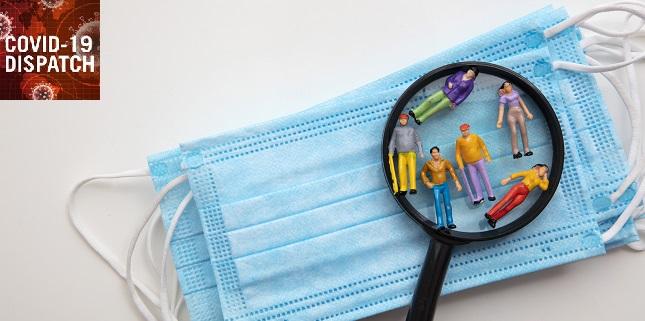
TCTMD reporter Todd Neale is keeping up on breaking news and peer-reviewed research related to COVID-19 and will update daily. If you have something to share, tell us. All of our COVID-19 coverage can be found on our COVID-19 Hub.
January 29, 2021
Johnson & Johnson announced that its single-shot Janssen COVID-19 vaccine has been shown to be 66% effective at preventing moderate-to-severe COVID-19 in an interim analysis of the phase III ENSEMBLE trial. The level of protection varied by geography—it was 72% in the United States, 66% in Latin America, and 57% in South Africa. That’s consistent with other recent evidence suggesting the available COVID-19 vaccines are less effective against the SARS-CoV-2 variant first detected in South Africa. When it came to preventing severe disease, the vaccine was 85% effective overall, according to a company press release.
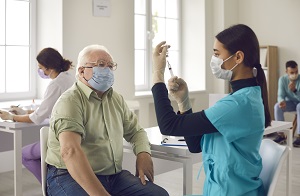 Novavax also announced positive vaccine data, reporting in a press release that its candidate was 89.3% effective against mild, moderate, or severe COVID-19 in a UK trial. “The study assessed efficacy during a period with high transmission and with a new UK variant strain of the virus emerging and circulating widely,” the company said. Vaccine efficacy was lower (49.4%) in a phase IIb trial conducted in South Africa, although it was a bit higher (60%) when the analysis was confined to HIV-negative individuals, who made up the vast majority of the study population.
Novavax also announced positive vaccine data, reporting in a press release that its candidate was 89.3% effective against mild, moderate, or severe COVID-19 in a UK trial. “The study assessed efficacy during a period with high transmission and with a new UK variant strain of the virus emerging and circulating widely,” the company said. Vaccine efficacy was lower (49.4%) in a phase IIb trial conducted in South Africa, although it was a bit higher (60%) when the analysis was confined to HIV-negative individuals, who made up the vast majority of the study population.
On Friday, the European Medicines Agency (EMA) recommended a third COVID-19 vaccine—the one from the University of Oxford and AstraZeneca—for conditional marketing authorization in Europe, based on trial evidence showing about 60% efficacy against symptomatic disease. It is indicated for people 18 and older. The EMA also published the first COVID-19 vaccine safety summary, which shows that the Comirnaty vaccine made by Pfizer/BioNTech has a safety profile in vaccination campaigns that is similar to what was seen in clinical trials. No new side effects were identified.
 Dubai’s decision to open up for New Year’s Eve celebrations is now being blamed for increasing spread of SARS-CoV-2 outside of the United Arab Emirates, “even as questions swirl about the city-state’s ability to handle reported record spikes in virus cases,” the Associated Press reports. Government officials in Dubai claim they have the situation under control there, but several countries, including Israel, the United Kingdom, Denmark, and the Philippines, have traced recent cases back to Dubai.
Dubai’s decision to open up for New Year’s Eve celebrations is now being blamed for increasing spread of SARS-CoV-2 outside of the United Arab Emirates, “even as questions swirl about the city-state’s ability to handle reported record spikes in virus cases,” the Associated Press reports. Government officials in Dubai claim they have the situation under control there, but several countries, including Israel, the United Kingdom, Denmark, and the Philippines, have traced recent cases back to Dubai.
In a JAMA viewpoint, John Moore, PhD, and Paul Offit, MD, discuss the growing threat of viral variants and what it means for protection provided by available COVID-19 vaccines. They recommend several steps to take in response to rise of variants, including isolation of SARS-CoV-2 viruses obtained from fully vaccinated people who require subsequent hospitalization; creation of surveillance systems and a central repository of serum samples from people who have been vaccinated; reduction of global spread; and adjustment to vaccine designs. They conclude by saying, “Wearing masks, physical distancing, and applying common sense can prevent their spread.”
A study in Science suggests that the vaccine from Pfizer/BioNTech will remain effective against the B.1.1.7 SARS-CoV-2 variant circulating in the UK. Sera obtained from 40 participants in a German phase I/II vaccine trial “had slightly reduced but overall largely preserved neutralizing titers against the B.1.1.7 lineage pseudovirus,” suggesting that the variant will not be able to elude the vaccine.
Zimbabwe is experiencing a surge in COVID-19 cases, forcing the country’s upper class—which has often traveled abroad for medical treatments, an option limited by the pandemic—to face the fact that the health system there has been deteriorating for years, Reuters reports. “More than half of Zimbabwe’s 32,646 confirmed COVID-19 cases and two-thirds of its 1,160 deaths were recorded in January alone, according to a Reuters tally.”
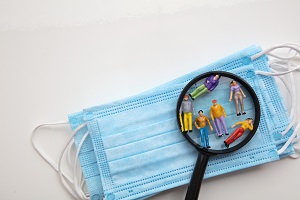 The Associated Press has an explainer on how experts from the World Health Organization (WHO) will search for the origins of COVID-19 in China now that they’re out of a 2-week quarantine spent in a Wuhan hotel. “The visit has been shrouded in secrecy: The WHO tweeted Thursday a few details of what they will do, but it’s unknown how much access China will give the researchers to the sites they want to visit and the people they want to talk to.”
The Associated Press has an explainer on how experts from the World Health Organization (WHO) will search for the origins of COVID-19 in China now that they’re out of a 2-week quarantine spent in a Wuhan hotel. “The visit has been shrouded in secrecy: The WHO tweeted Thursday a few details of what they will do, but it’s unknown how much access China will give the researchers to the sites they want to visit and the people they want to talk to.”
January 28, 2021
The SARS-CoV-2 variant first detected in South Africa has found its way to the United States, with the first two US cases reported in South Carolina, Reuters reports. Though the news is concerning, the US Centers for Disease Control and Prevention (CDC) said that there’s no evidence that the strain causes more-severe disease, though it may spread more easily.
 In an attempt to avoid outbreaks tied to the upcoming Lunar New Year celebrations, China “has added restrictions, offered incentives, and appealed to a sense of filial and national responsibility, in an effort to prevent about 300 million migrant workers from going home for the holiday,” the New York Times reports.
In an attempt to avoid outbreaks tied to the upcoming Lunar New Year celebrations, China “has added restrictions, offered incentives, and appealed to a sense of filial and national responsibility, in an effort to prevent about 300 million migrant workers from going home for the holiday,” the New York Times reports.
In a joint statement, the World Heart Federation (WHF), the American College of Cardiology (ACC), the American Heart Association (AHA), and the European Society of Cardiology (ESC) call for increased efforts to reduce air pollution, a key risk factor for cardiovascular disease. Air pollution can interact in dangerous ways with COVID-19, they note. “Thus, the urgency to combat air pollution is not diminished, but instead heightened in the context of the pandemic.”
In 2020, the US economy performed the worst it has since World War II, Reuters reports: “Though a recovery is underway, momentum slowed significantly as the year wound down amid a resurgence in coronavirus infections and exhaustion of nearly $3 trillion in relief money from the government. The moderation is likely to persist at least through the first three months of 2021.”
Among patients hospitalized with COVID-19 in North America, healthcare workers do not seem to fare any worse than others, according to a study in JAMA Network Open. The odds of dying or needing mechanical ventilation were no different between the two groups; however, healthcare workers were less likely to require ICU admission or a hospital stay of 7 days or longer.
 Two new pathology studies published in Circulation are highlighting the prevalence of microvascular thrombi in the hearts of patients with COVID-19 and exploring the role they might play in causing acute ischemic injury. The studies, like others before, suggest that myocarditis is rare but micro clots are not, supporting a role for anticoagulation, TCTMD’s Michael O’Riordan reports,
Two new pathology studies published in Circulation are highlighting the prevalence of microvascular thrombi in the hearts of patients with COVID-19 and exploring the role they might play in causing acute ischemic injury. The studies, like others before, suggest that myocarditis is rare but micro clots are not, supporting a role for anticoagulation, TCTMD’s Michael O’Riordan reports,
Researchers cultured SARS-CoV-2 in serial respiratory samples from hospitalized COVID-19 patients, finding that the median time from symptom onset to viral clearance in culture was 7 days, as they report in the New England Journal of Medicine. The median time from symptom onset to viral clearance on real-time RT-PCR was 34 days. The findings, which require confirmation in larger and more-diverse patient groups, “may be useful in guiding isolation periods for patients with COVID-19 and in estimating the risk of secondary transmission among close contacts in contract tracing,” the investigators say.
A study presented today at the Society for Maternal-Fetal Medicine (SMFM) annual meeting shows that pregnant women who have severe COVID-19 symptoms have a higher risk of complications, including cesarean delivery, postpartum hemorrhage, hypertensive disorders, and preterm birth, according to a press release from the US National Institutes of Health (NIH). Transmission of SARS-CoV-2 from mother to infant was rare. Four maternal deaths were attributed to COVID-19.
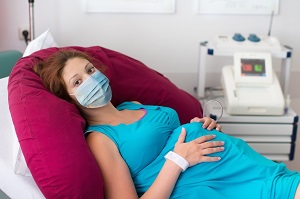 Though Canadian guidance recommends that COVID-19 vaccines should not be offered to those who are pregnant or breastfeeding until additional data are available, authors of a commentary in CMAJ disagree. “It is ethically justified to offer individuals who are pregnant, trying to conceive, or breastfeeding the option to receive the vaccine,” they write. Shared decision-making is important, they stress, adding that “healthcare workers should support the individual’s decision to receive the vaccine or not.”
Though Canadian guidance recommends that COVID-19 vaccines should not be offered to those who are pregnant or breastfeeding until additional data are available, authors of a commentary in CMAJ disagree. “It is ethically justified to offer individuals who are pregnant, trying to conceive, or breastfeeding the option to receive the vaccine,” they write. Shared decision-making is important, they stress, adding that “healthcare workers should support the individual’s decision to receive the vaccine or not.”
Survival following in-hospital cardiac arrest is low among patients with COVID-19, a study in Resuscitation shows. Return of spontaneous circulation occurred in 22.3% of patients, with only 12.3% surviving to 30 days and 11.9% surviving to discharge, although rates varied widely between the two centers with the highest in-hospital cardiac arrest volumes and the rest of the hospitals.
January 27, 2021
Two antibodies in development by Regeneron, casirivimab and imdevimab, prevented infection among volunteers living in the same household as someone with COVID-19, STAT reports. Those are early results from a randomized clinical trial sponsored by the National Institute of Allergy and Infectious Diseases (NIAID), the company stated in a press release. So far 400 patients have been enrolled; the trial is continuing.
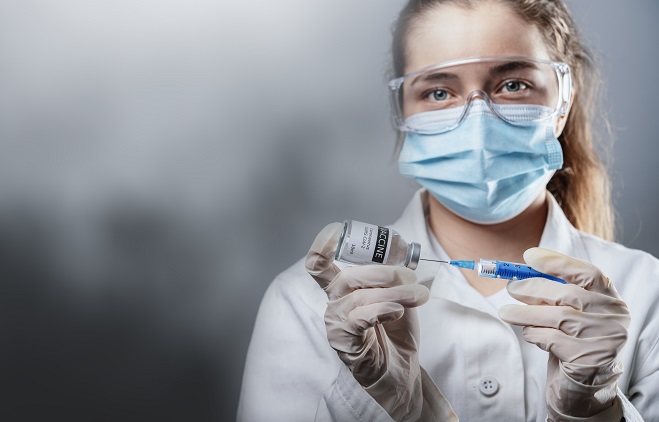 Amid complaints that vaccinations have not rolled out as swiftly as hoped, Pfizer/BioNTech, announced that they will be able to supply the United States with 200 million COVID-19 vaccines 2 months ahead of schedule—by the end of May. That’s because of a formal change to the product label specifying that an additional dose can be extracted from each vial, Bloomberg reports. This same issue is ruffling feathers in other parts of the world, however. In Canada, Pfizer/BioNTech is pressing regulators to change the labelling to reflect the additional dose, notes the Globe and Mail. That would allow the company to ship fewer vials to the country—which placed an order for individual doses, not vials.
Amid complaints that vaccinations have not rolled out as swiftly as hoped, Pfizer/BioNTech, announced that they will be able to supply the United States with 200 million COVID-19 vaccines 2 months ahead of schedule—by the end of May. That’s because of a formal change to the product label specifying that an additional dose can be extracted from each vial, Bloomberg reports. This same issue is ruffling feathers in other parts of the world, however. In Canada, Pfizer/BioNTech is pressing regulators to change the labelling to reflect the additional dose, notes the Globe and Mail. That would allow the company to ship fewer vials to the country—which placed an order for individual doses, not vials.
Canadian vaccination rates lag far behind a number of other Western countries, as captured by numbers reported yesterday in the New York Times, drawn from Our World in Data. Israel, depending primarily on the Pfizer/BioNTech product, is leading in vaccinations with nearly 48 first doses per 100 people, though the impressive rates do not include the occupied West Bank or the Gaza Strip. In the United Arab Emirates, vaccinations are proceeding at a rate of 27 per 100 people using the Chinese Sinopharm vaccine. Rate per 100 citizens in the United Kingdom is 10.8, whereas the United States has passed seven. Canada, Germany, Italy, and France are hovering in the range of two per 100.
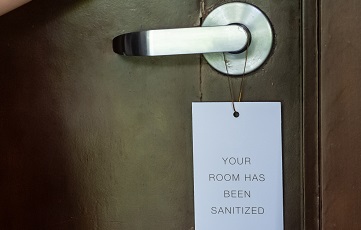 In most of the world, vaccination won’t come soon enough for the thousands dying each day, including in the UK where the more infectious SARS-CoV-2 variant is being blamed for pushing the number of deaths in Britain past 100,000. “The 100,162 deaths are more than Britain’s civilian toll in World War II and twice the number killed in the 1940-41 Blitz bombing campaign,” Reuters reports. On Wednesday, UK officials announced that international visitors arriving from one of 22 hard-hit countries will need to quarantine for 10 days at airport hotels, at their own expense—an approach already taken in Australia and several Asian nations, the New York Times reports.
In most of the world, vaccination won’t come soon enough for the thousands dying each day, including in the UK where the more infectious SARS-CoV-2 variant is being blamed for pushing the number of deaths in Britain past 100,000. “The 100,162 deaths are more than Britain’s civilian toll in World War II and twice the number killed in the 1940-41 Blitz bombing campaign,” Reuters reports. On Wednesday, UK officials announced that international visitors arriving from one of 22 hard-hit countries will need to quarantine for 10 days at airport hotels, at their own expense—an approach already taken in Australia and several Asian nations, the New York Times reports.
Numbers are also on the rise in France, where daily infections stayed above 20,000 for the fourth straight day, Reuters noted. A 6 PM curfew was implemented nearly 2 weeks ago in the hopes of flatting the surge, but it has not proved effective enough to curb the spread and a new lockdown may be in the offing, France24 reports.
A newly launched COVID-19 Neuro Databank/Biobank (NeuroCOVID), spearheaded and maintained by NYU Langone Health in New York City, plans to track “neurological symptoms, complications, and outcomes as well as COVID-19 effects on preexisting neurological conditions, said a statement from the National Institutes of Health (NIH), which is supporting the project.
In-school transmission was minimal at 17 rural Wisconsin schools (kindergarten to grade 12), where mask use was high, a report in Morbidity and Mortality Weekly Report concludes. At the time of the study, incidence of COVID-19 was relatively low among student and staff as compared with the county overall, but even among the 191 cases identified among staff and students, only seven (3.7%)—all students—could be linked to in-school spread. Although asymptomatic transmission is possible, say the authors, “this study demonstrated that with precautions in place, in-school transmission of SARS-CoV-2 appeared to be uncommon in this rural Wisconsin community, despite up to a 40% positive SARS-CoV-2 test rate in the surrounding county.”
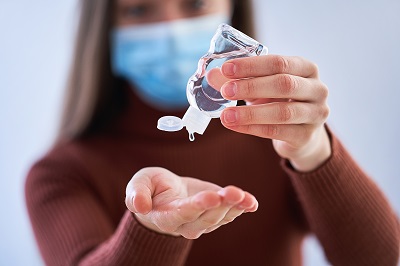 The US Food and Drug Administration (FDA) has placed all alcohol-based hand sanitizers arriving from Mexico under import alert over concerns about subpotent or dangerous formulations. The designation means that all products will be subject to heightened FDA scrutiny and that agency staffers may detain shipments. “This marks the first time the FDA has issued a countrywide import alert for any category of drug product,” an FDA statement reads.
The US Food and Drug Administration (FDA) has placed all alcohol-based hand sanitizers arriving from Mexico under import alert over concerns about subpotent or dangerous formulations. The designation means that all products will be subject to heightened FDA scrutiny and that agency staffers may detain shipments. “This marks the first time the FDA has issued a countrywide import alert for any category of drug product,” an FDA statement reads.
Researchers writing in JAMA Network Open describe the model they designed to estimate the impact of decreased local tumor control and increased metastases among patients with cancer whose treatments are delayed due to COVID-19. For fast-growing tumors such as head and neck cancers, 6-month delays were associate with a 21% increase in local risk and a 6% increase in metastatic cancers. For slower-growing tumors, such as certain lung cancers, by contrast, those numbers fell to 4.3% and 1.9% at 6 months. Guidelines are already in place to help strapped centers triage cancer care, the authors note, but quantitative models like this one can help to guide these approaches.
In a second study in JAMA Network Open, Mattia Bellan, MD, PhD, and colleagues report that half of the patients hospitalized with COVID-19 at an academic hospital in Northern Italy during the first wave of the pandemic had breathing problems 4 months after discharge. One in five had symptoms of post-traumatic stress.
The interplay between COVID-19 and mental health is highlighted in JAMA Psychiatry today, where investigators report that adults with schizophrenia spectrum disorder are at increased risk for mortality after SARS-CoV-2 infection. No such link was seen for mood or anxiety disorders.
 Writing in The Lancet Digital Health, investigators tracked the spread of hydroxychloroquine misinformation on Twitter, starting with former US President Donald Trump’s initial tweet in July to 84 million followers. “Our study adds additional evidence to [a] growing number of studies by characterizing how a single retweet from a powerful public figure can propagate various misinformation topics in an online community.” There are lessons to be learned here for countering future “infodemics,” they argue.
Writing in The Lancet Digital Health, investigators tracked the spread of hydroxychloroquine misinformation on Twitter, starting with former US President Donald Trump’s initial tweet in July to 84 million followers. “Our study adds additional evidence to [a] growing number of studies by characterizing how a single retweet from a powerful public figure can propagate various misinformation topics in an online community.” There are lessons to be learned here for countering future “infodemics,” they argue.
Shelley Wood contributed today's Dispatch.
January 26, 2021
 The United Kingdom, which has seen a surge in COVID-19 in the new year driven partly by the emergence of a more-infectious viral strain, is expected to announce today whether it will implement mandatory quarantine in hotels for some or all incoming travelers, Reuters reports. Moreover, the UK minister responsible for vaccinations warned people to not book summer vacations.
The United Kingdom, which has seen a surge in COVID-19 in the new year driven partly by the emergence of a more-infectious viral strain, is expected to announce today whether it will implement mandatory quarantine in hotels for some or all incoming travelers, Reuters reports. Moreover, the UK minister responsible for vaccinations warned people to not book summer vacations.
The World Health Organization (WHO) has updated its guidance on the clinical management of COVID-19, which now includes conditional recommendations to use thromboprophylaxis dosing of anticoagulation in patients hospitalized with COVID-19 who don’t have an established indication for a higher dose and “for use of pulse oximetry monitoring at home as part of a package of care, including patient and provider education and appropriate follow-up in symptomatic patients with COVID-19 and risk factors for progression to severe disease who are not hospitalized.”
Taiwan has quarantined about 5,000 people as officials search for the source of two new COVID-19 cases—a husband and wife—linked to a hospital, the Associated Press reports. The man had stayed in Taoyuan General Hospital for 3 days for a condition unrelated to COVID-19, and his wife looked after him. “Taiwan has been applauded for its swift and sustained efforts to contain COVID-19, with just seven deaths and fewer than 900 confirmed cases, despite its close proximity to China, where the pandemic began.”
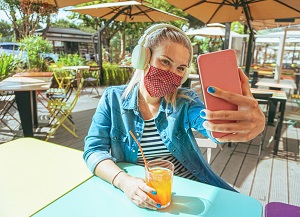 California pulled back on some COVID-19-related restrictions on Monday, allowing restaurants to reopen for outdoor dining and greater social mixing, in response to favorable trends in infections and hospitalizations, Reuters reports. The Associated Press details the data that public health officials used to guide the decision.
California pulled back on some COVID-19-related restrictions on Monday, allowing restaurants to reopen for outdoor dining and greater social mixing, in response to favorable trends in infections and hospitalizations, Reuters reports. The Associated Press details the data that public health officials used to guide the decision.
US cases numbers have fallen around the country over the past few weeks, although they are still at “alarmingly high levels,” according to an Associated Press story. Anthony Fauci, MD, director of the National Institute of Allergy and Infectious Diseases (NIAID), said the trend “appears to reflect a ‘natural peaking and then plateauing’ after a holiday surge, rather than the arrival of the vaccine in mid-December.” The average number of daily deaths is just under 3,100 now, down from an average of over 3,350 less than 2 weeks ago. Caution remains about what might happen with new variants of the virus. The first known US case associated with a Brazilian variant was detected in Minnesota in a person who had recently traveled to Brazil.
A shelter-in-place order in northern California early in the pandemic was associated with lower rates of infections with seasonal respiratory viruses, including influenza and rhinovirus or enterovirus, according to a study in JAMA Network Open. “To our knowledge, this study is the first in the United States to examine the implications of SARS-CoV-2 public health measures for influenza rates as well as the first in the world to examine the implications of these public initiatives for other seasonal respiratory viruses,” the researchers say.
A New York Times story looks into what’s known about how SARS-CoV-2 is assembled and what it might take to break it apart. “Viruses like HIV tend to be on the softer side, smooshing down like a foam ball, whereas the ones that cause influenza are more brittle, prone to cracking like an egg,” one expert told the paper. Coronaviruses are “somewhere in the middle, a sort of tactile Goldilocks in the world of infectious disease.”
A study out of the Cleveland Clinic, published in JAMA Internal Medicine, suggests that cumulative exposure to cigarette smoke measured in pack-years is an independent risk factor for hospitalization and death from COVID-19. The researchers say the association is likely mediated at least in part by comorbidities.
 In Morbidity and Mortality Weekly Report, researchers detail the mitigation measures used by the National Football League (NFL), which is set to hold its Super Bowl in about 2 weeks. “Although the protocols implemented by the NFL were resource-intensive, strategies such as accounting for specific characteristics of the close contact, in addition to time and duration, and creation of an intensive protocol are applicable to other settings, including essential workplaces, long-term care facilities, and schools.”
In Morbidity and Mortality Weekly Report, researchers detail the mitigation measures used by the National Football League (NFL), which is set to hold its Super Bowl in about 2 weeks. “Although the protocols implemented by the NFL were resource-intensive, strategies such as accounting for specific characteristics of the close contact, in addition to time and duration, and creation of an intensive protocol are applicable to other settings, including essential workplaces, long-term care facilities, and schools.”
January 25, 2021
Just over a year since the first US COVID-19 case was confirmed in Washington state, the United States has now exceeded 25 million confirmed cases, although the actual number of infections is likely much higher, NPR reports. India has the second highest number of cases, with about 10.7 million confirmed, according to the Johns Hopkins COVID-19 Dashboard.
NERVTAG report with preliminary analysis of relative disease severity for B.1.1.7 vs other variants: https://t.co/MvD6nyvx56 via @PeterHorby pic.twitter.com/L38WLFKLH8
— Adam Kucharski (@AdamJKucharski) January 22, 2021
Concerning news out of the UK: the more-infectious SARS-CoV-2 variant detected there—called B.1.1.7—may be associated with an increase in the severity of COVID-19 as well, according to a report from the New and Emerging Respiratory Virus Threats Advisory Group (NERVTAG) released late last week. Preliminary analyses had suggested that disease severity was not increased with this strain. The authors of the new paper note several limitations, but say there is a “realistic possibility” that infection with this variant is associated with a greater mortality risk.
Over the weekend, the Montreal Heart Institute reported positive results from the COLCORONA trial of colchicine for nonhospitalized patients with COVID-19, saying that the drug reduces the risk of death or hospitalization by 21% compared with placebo. However, the difference only “approached statistical significance” in the overall study population of 4,488 patients. Among the 4,159 patients with a diagnosis of COVID-19 proven by a nasopharyngeal PCR test, there was a significant effect, the researchers report. STAT’s Matthew Herper delves into some skepticism about the findings, both because they haven’t been published in a peer-reviewed journal and because the trial didn’t meet its primary endpoint.
 US President Joe Biden will reinstate travel restrictions on non-American travelers from Brazil, Ireland, the United Kingdom, and 26 other European countries that allow travel across open borders, the Associated Press reports. South Africa will be added to the list, too, because of concerns about a SARS-CoV-2 variant first detected there.
US President Joe Biden will reinstate travel restrictions on non-American travelers from Brazil, Ireland, the United Kingdom, and 26 other European countries that allow travel across open borders, the Associated Press reports. South Africa will be added to the list, too, because of concerns about a SARS-CoV-2 variant first detected there.
Lebanon is facing a COVID-19 surge, with hospitals running out of room for more patients, according to the Associated Press: “Oxygen tanks, ventilators and most critically, medical staff, are in extremely short supply. Doctors and nurses say they are exhausted. Facing burnout, many of their colleagues left. Many others have caught the virus, forcing them to take sick leave and leaving fewer and fewer colleagues to work overtime to carry the burden.”
Meanwhile, life is just about back to normal in Wuhan, China, where the virus was first detected more than a year ago. “The city has been largely free of further outbreaks since the lockdown was lifted on April 8, but questions persist as to where the virus originated and whether Wuhan and Chinese authorities acted fast enough and with sufficient transparency to allow the world to prepare for a pandemic that has sickened more than 98 million.” Of note, a study reported in our Dispatch back on January 11th suggested that, in fact, Wuhan’s outbreak continued well into May, despite assurances the spread had been controlled.
 Moderna is planning a clinical trial to test an altered COVID-19 vaccine against the SARS-CoV-2 strain identified in South Africa after tests indicated that the original vaccine may produce a weakened immune response to it, Reuters reports. Nevertheless, the company said in a press release, in vitro studies show the neutralizing titer levels “remain above levels that are expected to be protective.”
Moderna is planning a clinical trial to test an altered COVID-19 vaccine against the SARS-CoV-2 strain identified in South Africa after tests indicated that the original vaccine may produce a weakened immune response to it, Reuters reports. Nevertheless, the company said in a press release, in vitro studies show the neutralizing titer levels “remain above levels that are expected to be protective.”
Anaphylactic reactions to the Moderna vaccine appear rare, US government researchers report in Morbidity and Mortality Weekly Report. Among more than 4 million first doses administered between December 21, 2020, and January 10, 2021, there were 10 cases of anaphylaxis reported to the Vaccine Adverse Event Reporting System (VAERS). No anaphylaxis-related deaths were recorded. Overall, there were 1,266 adverse events reported, for a rate of 0.03%. Data released last week show that anaphylaxis is rare after administration of the Pfizer/BioNTech vaccine as well.
Merck has stopped it’s COVID-19 vaccine development program after phase I trials showed both of its candidates generated immune responses that were inferior to those seen in patients who had recovered from COVID-19 and to those seen with other vaccines, Reuters reports. The company said in a press release that it will continue development of two potential therapies, a first-in-class investigational recombinant fusion protein targeting the inflammatory response to SARS-CoV-2 and molnupiravir, an investigational antiviral agent.
 A study in JAMA Pediatrics shows that during a period of lockdown in southwest Germany, spread of SARS-CoV-2 was low in children up to age 10 years. “Accordingly, it is unlikely that children have boosted the pandemic,” the researchers say. In an accompanying editorial, Sean O’Leary, MD, says the “preponderance of evidence” now shows that children 10 years and younger are less likely to contract the virus and spread it to others. Thus, he concludes, “we must prioritize the reopening of childcare facilities and elementary schools to full time, in-person learning without exception.”
A study in JAMA Pediatrics shows that during a period of lockdown in southwest Germany, spread of SARS-CoV-2 was low in children up to age 10 years. “Accordingly, it is unlikely that children have boosted the pandemic,” the researchers say. In an accompanying editorial, Sean O’Leary, MD, says the “preponderance of evidence” now shows that children 10 years and younger are less likely to contract the virus and spread it to others. Thus, he concludes, “we must prioritize the reopening of childcare facilities and elementary schools to full time, in-person learning without exception.”
January 22, 2021
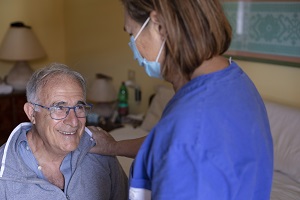 A study conducted at Sheba Medical Center in Israel shows that among 102 people who received two doses of the Pfizer/BioNTech COVID-19 vaccine, all but two had a significant six- to 20-fold increase in antibody levels, according to a press release. Antibody levels were higher than those seen in patients who had recovered from COVID-19. “There is certainly cause for optimism,” the head of the study said.
A study conducted at Sheba Medical Center in Israel shows that among 102 people who received two doses of the Pfizer/BioNTech COVID-19 vaccine, all but two had a significant six- to 20-fold increase in antibody levels, according to a press release. Antibody levels were higher than those seen in patients who had recovered from COVID-19. “There is certainly cause for optimism,” the head of the study said.
Mexico posted new daily records for confirmed COVID-19 cases (22,339) and deaths (1,803) on Thursday, according to the Associated Press. “The recent surge in cases has swamped hospitals. Mexico City is the country’s epicenter of the pandemic, and its hospitals are at 89% capacity, while nationwide 61% of hospital beds are filled.”
Full-dose anticoagulation reduced the need for vital organ support in hospitalized patients moderately ill with COVID-19, according to a press release from the US National Institutes of Health (NIH). “A trend in possible reduction of mortality was also observed and is being further studied.” The findings come from an interim analysis of results from three clinical trial platforms—REMAP-CAP, ACTIV-4, and ATTACC. In December, the NIH announced that the part of the study involving the most-severe cases was paused amid signals that therapeutic anticoagulation did not reduce the need for organ support in that group.
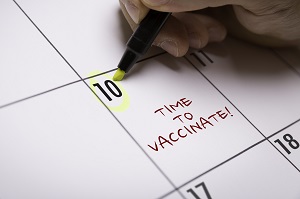 The US Centers for Disease Control and Prevention (CDC) updated its guidance regarding use of the mRNA COVID-19 vaccines currently authorized for use in the United States. The agency still recommends a 3-week interval between doses of the Pfizer/BioNTech vaccine and a 4-week interval between doses of the Moderna vaccine, but now notes that the second dose of each “may be scheduled for administration up to 6 weeks (42 days) after the first dose” if it’s not feasible to stick to the recommended interval.
The US Centers for Disease Control and Prevention (CDC) updated its guidance regarding use of the mRNA COVID-19 vaccines currently authorized for use in the United States. The agency still recommends a 3-week interval between doses of the Pfizer/BioNTech vaccine and a 4-week interval between doses of the Moderna vaccine, but now notes that the second dose of each “may be scheduled for administration up to 6 weeks (42 days) after the first dose” if it’s not feasible to stick to the recommended interval.
A Reuters special report digs into how the CDC missed chances to spot the silent spread of SARS-CoV-2 among asymptomatic people. In particular, the agency declined to give its approval for a study that would have tested 57 Americans who arrived at a Nebraska military base after being evacuated from Wuhan, China, in early February 2020.
The monoclonal antibody bamlanivimab, when combined with etesevimab, reduces SARS-CoV-2 viral load at day 11 in nonhospitalized patients with mild-to-moderate COVID-19, according to results of the phase II/III BLAZE-1 trial published in JAMA. Bamlanivimab monotherapy was not effective. As pointed out in an accompanying editor’s note, the findings are somewhat different from an interim analysis published in October in the New England Journal of Medicine. “Even though monoclonal antibodies likely improve clinical outcomes in selected patients, the studies needed to answer remaining questions on the utility of treatment (which patients can benefit and in what circumstance) are unlikely to become available in a timely manner,” they say. Bamlanivimab, made by Eli Lilly, received an emergency use authorization from the US Food and Drug Administration (FDA) in November.
In a clinical update published in JAMA, researchers from the CDC and FDA detail allergic reactions, including anaphylaxis, that were seen after administration of the first dose of the Pfizer/BioNTech COVID-19 vaccine and reported to the Vaccine Adverse Event Reporting System (VAERS). The estimated rate of anaphylaxis was 11.1 cases per million doses; no deaths were reported. Most patients with anaphylaxis (81%) had a documented history of allergies or allergic reactions.
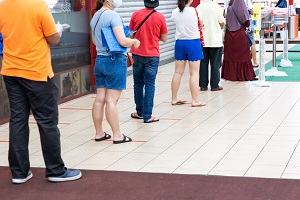 Long lines were reported in Beijing as authorities launched mass COVID-19 testing in the Chinese capital after several consecutive days of new infections, according to Reuters. “City officials said there were some ‘leaks’ in epidemic control in some rural areas, with inadequate adherence to rules on wearing masks, social distancing and temperature checks.”
Long lines were reported in Beijing as authorities launched mass COVID-19 testing in the Chinese capital after several consecutive days of new infections, according to Reuters. “City officials said there were some ‘leaks’ in epidemic control in some rural areas, with inadequate adherence to rules on wearing masks, social distancing and temperature checks.”
The COVID-19 death total has topped 50,000 in Germany, after cresting 40,000 less than 2 weeks ago, the Associated Press reports. The country saw a comparatively small number of deaths early on in the pandemic but infections have taken off in the fall and winter. “In Europe, the UK, Italy, France, and Spain, all of which have smaller populations, still have higher death tolls,” the story notes.
The latest findings from the Understanding America Study show that even though the majority of US adults view wearing a mask as an effective way to stay safe from COVID-19, their actual behavior is less consistent. For example, two-thirds of respondents reported being in close contact with people outside their household in early December, but only half said they wore a mask always or most of the time. Consistent mask use was least common among white individuals and most common among Black individuals.
 Despite reports to the contrary, the Olympic Games, scheduled to kick off in Tokyo in July, will move forward as planned, International Olympic Committee (IOC) President Thomas Bach and local organizers insisted. The Tokyo Olympics were already postponed 10 months ago near the start of the pandemic. Some believe the event hinges on vaccinating Japan’s 127 million residents.
Despite reports to the contrary, the Olympic Games, scheduled to kick off in Tokyo in July, will move forward as planned, International Olympic Committee (IOC) President Thomas Bach and local organizers insisted. The Tokyo Olympics were already postponed 10 months ago near the start of the pandemic. Some believe the event hinges on vaccinating Japan’s 127 million residents.
January 21, 2021
 Newly inaugurated US President Joe Biden took steps to tackle the COVID-19 pandemic immediately, signing executive orders to require masks on federal property and halt the withdrawal from the World Health Organization (WHO), Reuters reports. He plans to sign 10 more executive orders on Thursday, aiming “to establish a COVID-19 testing board to ramp up testing, address supply shortfalls, establish protocols for international travelers, and direct resources to hard-hit minority communities.” The orders will also address the use of disaster funds to help reopen schools and a requirement to wear masks on planes and buses.
Newly inaugurated US President Joe Biden took steps to tackle the COVID-19 pandemic immediately, signing executive orders to require masks on federal property and halt the withdrawal from the World Health Organization (WHO), Reuters reports. He plans to sign 10 more executive orders on Thursday, aiming “to establish a COVID-19 testing board to ramp up testing, address supply shortfalls, establish protocols for international travelers, and direct resources to hard-hit minority communities.” The orders will also address the use of disaster funds to help reopen schools and a requirement to wear masks on planes and buses.
STAT provides an overview of 10 officials in the Biden administration to watch regarding the COVID-19 response, and details the dissolution of the COVID-19 advisory board Biden had set up after he won the election in November.
European Union leaders are mulling whether to further limit travel and tighten border controls to stem the spread of more-infectious SARS-CoV-2 variants. “We can’t rule out border closures, but want to prevent them through cooperation within the European Union,” German Chancellor Angela Merkel said at a news conference.
India is planning to give millions of doses of COVID-19 vaccine to South Asian countries in the coming weeks, “drawing praise from its neighbors and pushing back against China’s dominating presence in the region,” Reuters reports. Free shipments of the AstraZeneca/University of Oxford vaccine manufactured by the Serum Institute of India have already started arriving in the Maldives, Bhutan, Bangladesh and Nepal.
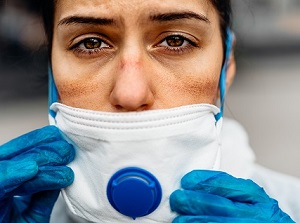 In a feature story, TCTMD Managing Editor Shelley Wood explores the impact of the growing number of traveling nurses and techs during the pandemic: “All over the US, cath labs and cardiac care units are experiencing dire shortages of nurses and technicians who are dropping salaried positions for higher-paying short-term contracts. For chronically understaffed cath labs, the need to rely too much on travelers was a nuisance in the pre-COVID era; these days it is wearing down teams who are already stretched to breaking and potentially putting patients at risk, even if they don’t have the virus.”
In a feature story, TCTMD Managing Editor Shelley Wood explores the impact of the growing number of traveling nurses and techs during the pandemic: “All over the US, cath labs and cardiac care units are experiencing dire shortages of nurses and technicians who are dropping salaried positions for higher-paying short-term contracts. For chronically understaffed cath labs, the need to rely too much on travelers was a nuisance in the pre-COVID era; these days it is wearing down teams who are already stretched to breaking and potentially putting patients at risk, even if they don’t have the virus.”
In potential bad news on the vaccine front, findings published on the preprint server bioRxiv suggest that the SARS-CoV-2 variant identified in South Africa eludes neutralizing antibodies in COVID-19 convalescent plasma. “These data highlight the prospect of reinfection with antigenically distinct variants and may foreshadow reduced efficacy of current spike-based vaccines,” the authors say.
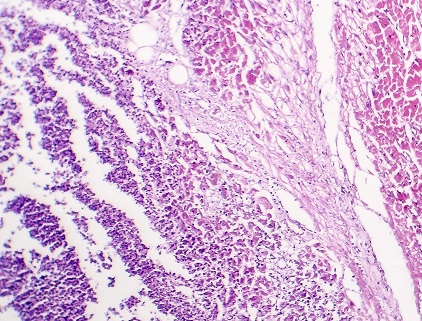 True myocarditis is uncommon in COVID-19, according to a review in the Journal of the American College of Cardiology. “What we can conclude is that in the histological examination, we just don't find [myocarditis] very commonly,” senior author Aloke Finn, MD, told TCTMD’s L.A. McKeown. “That’s supported by our own data of the hearts we examined. They didn’t have any evidence of myocarditis.”
True myocarditis is uncommon in COVID-19, according to a review in the Journal of the American College of Cardiology. “What we can conclude is that in the histological examination, we just don't find [myocarditis] very commonly,” senior author Aloke Finn, MD, told TCTMD’s L.A. McKeown. “That’s supported by our own data of the hearts we examined. They didn’t have any evidence of myocarditis.”
In a Brazilian trial, tocilizumab failed to improve outcomes in patients with severe or critical COVID-19 who were receiving supplemental oxygen or mechanical ventilation and had abnormal levels of at least two serum biomarkers, according to findings published in the BMJ. The drug plus standard care “was not superior to standard care alone in improving clinical outcomes at 15 days, and it might increase mortality,” the researchers report. This news is at odds with the positive results highlighted earlier this week in the same journal, as we reported in our Dispatch for January 18; of note, tocilizumab is one of the agents still being studied in the large RECOVERY trial.
January 20, 2021
The United States just passed 400,000 COVID-19 deaths: as Joe Biden begins his presidential term today, STAT explores the biggest challenges he’ll face in dealing with the pandemic. “No president wants a federal emergency. No one in that role is waiting to call in FEMA reservists or deploy the National Guard. But on Wednesday, after Joe Biden raises his right hand and swears his oath to preserve, protect, and defend the US Constitution, that’s exactly the plan. Their mission: to set up a slew of new vaccination clinics.” STAT also discusses what is known and not known about the SARS-CoV-2 variants cropping up around the world.
The situation in the United Kingdom remains dire, too. Reuters writes: “Some British hospitals look like war zones with doctors struggling to cope with an influx of patients infected with COVID-19, the government’s top scientific adviser said, as the death toll rose by a record daily amount towards 100,000.”
The Pfizer/BioNTech vaccine is likely to be effective against the more-infectious SARS-CoV-2 variant circulating in the UK, CNBC reports based on findings that have not yet been peer-reviewed. In their paper, however, company researchers caution: “The ongoing evolution of SARS-CoV-2 necessitates continuous monitoring of the significance of changes for maintained protection by currently authorized vaccines.”
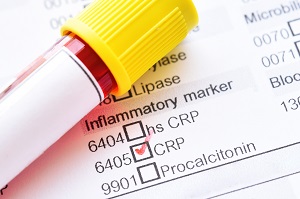 Among adults hospitalized with COVID-19, elevated C-reactive protein (CRP) levels are associated with increased risks of venous thromboembolism, acute kidney injury, critical illness, and mortality, according to a study in the European Heart Journal. Risks were especially pronounced in patients who also had high D-dimer levels.
Among adults hospitalized with COVID-19, elevated C-reactive protein (CRP) levels are associated with increased risks of venous thromboembolism, acute kidney injury, critical illness, and mortality, according to a study in the European Heart Journal. Risks were especially pronounced in patients who also had high D-dimer levels.
The US Food and Drug Administration (FDA) has issued new guidance on the testing of alcohol and isopropyl alcohol for methanol, including during the COVID-19 emergency, to prevent methanol contamination or substitution in drugs. “Methanol is not an acceptable ingredient for any drug product and should not be used due to its toxic effects,” the agency notes.
Echocardiographic abnormalities in patients hospitalized with COVID-19 included LVEF < 50% (in 16%), regional wall motion abnormalities (in 15%), and RV systolic pressure ≥ 35 mm Hg (in 25%), according to a study in Mayo Clinic Proceedings. However, the researchers note, 78% of the patients who had prior echocardiography had preexisting abnormalities. “Caution should be exercised in attributing such abnormalities to the COVID-19 infection in this comorbid patient population.”
 A study in JAMA Pediatrics highlights the potential mental health effects of COVID-19-related quarantines. More than 20% of adolescents in Wuhan, China, experienced anxiety and depression during the quarantine in the early part of the pandemic. “Long-term home restrictions might have adverse effects on mental health of adolescents because of a sharp change of in lifestyles and various stressors, such as fears of infection, frustration, and boredom,” the researchers say.
A study in JAMA Pediatrics highlights the potential mental health effects of COVID-19-related quarantines. More than 20% of adolescents in Wuhan, China, experienced anxiety and depression during the quarantine in the early part of the pandemic. “Long-term home restrictions might have adverse effects on mental health of adolescents because of a sharp change of in lifestyles and various stressors, such as fears of infection, frustration, and boredom,” the researchers say.
French students are planning a series of protests on Wednesday to highlight that problem, BBC News reports. One student said, “Not a day goes by without a friend calling me because they're struggling with their mental health.”
Experts say “COVID-19 vaccine guidance for those who are lactating is based on faulty assumptions,” according to a STAT story: “Government guidelines and news headlines alike have grouped those who are breastfeeding and pregnant together when talking about COVID vaccine safety. But as people try to make their own decisions without safety data, it might help to acknowledge that getting vaccinated during pregnancy and lactation carry different theoretical risks—and potential benefits.”
Among patients with COVID-19 admitted to US Veterans Affairs hospitals, strains on critical care capacity were associated with an increase in mortality, researchers report in JAMA Network Open, which suggests “that public health officials and hospital administrators should consider interventions that reduce COVID-19 ICU demand to improve survival among patients with COVID-19 in the ICU.”
 Also in JAMA Network Open, researchers show that cumulative COVID-19 case rates among people detained by US Immigration and Customs Enforcement (ICE) are higher than in the general population and “dwarf those of surrounding communities.” The study is limited by reliance on ICE reporting, however, and the numbers might be higher, they note. “Ultimately, it is imperative that expeditious action is taken to protect people housed in ICE detention facilities from COVID-19 by reducing the number of people detained and terminating raids, transfers, and deportation flights.”
Also in JAMA Network Open, researchers show that cumulative COVID-19 case rates among people detained by US Immigration and Customs Enforcement (ICE) are higher than in the general population and “dwarf those of surrounding communities.” The study is limited by reliance on ICE reporting, however, and the numbers might be higher, they note. “Ultimately, it is imperative that expeditious action is taken to protect people housed in ICE detention facilities from COVID-19 by reducing the number of people detained and terminating raids, transfers, and deportation flights.”
January 19, 2021
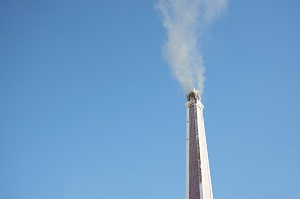 The agency in charge of air pollution control in Los Angeles County temporarily suspended limits on cremations to assist in a “backlog” caused by the high COVID-19 activity in the area, CNN reports. “The current rate of death is more than double that of prepandemic years, leading to hospitals, funeral homes, and crematoriums exceeding capacity without the ability to process the backlog of cases,” the South Coast Air Quality Management District said in a press release.
The agency in charge of air pollution control in Los Angeles County temporarily suspended limits on cremations to assist in a “backlog” caused by the high COVID-19 activity in the area, CNN reports. “The current rate of death is more than double that of prepandemic years, leading to hospitals, funeral homes, and crematoriums exceeding capacity without the ability to process the backlog of cases,” the South Coast Air Quality Management District said in a press release.
Germany’s lockdown has been extended to the middle of February with the aim of controlling spread of the virus spurred by more-infectious variants. Chancellor Angela Merkel and state premiers also agreed to require medical masks for people traveling on public transportation.
The BRACE CORONA findings—presented during the virtual European Society of Cardiology Congress 2020 in September—were published today in JAMA. The trial, along with REPLACE COVID published last week, supports advice to continue renin-angiotensin-aldosterone-system (RAAS) inhibitors in patients hospitalized with COVID-19 if they’re already taking the drugs.
At a single tertiary care hospital in Israel, TAVI performed during the pandemic was not associated with an increase in vascular complications, permanent pacemaker implantation, length of stay, or 30-day mortality compared with procedures performed a year earlier, according to a study in the American Journal of Cardiology. The authors conclude that “TAVI procedures can be performed effectively and safely during the COVID-19 pandemic, using a minimalist approach, early discharge, and by maintaining proper use of personal protective equipment.”
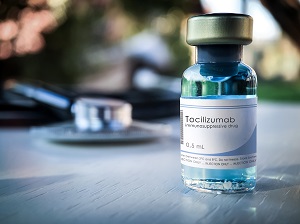 Recent trials have provided promising results regarding use of two rheumatoid arthritis drugs—tocilizumab and sarilumab—for patients with severe COVID-19, according to a news story in the BMJ. The studies show that the agents improve survival and reduce the time spent in the hospital by up to 10 days. One of the investigators said, “If we treat 12 patients it would save one life. This is a very big effect and really exciting.”
Recent trials have provided promising results regarding use of two rheumatoid arthritis drugs—tocilizumab and sarilumab—for patients with severe COVID-19, according to a news story in the BMJ. The studies show that the agents improve survival and reduce the time spent in the hospital by up to 10 days. One of the investigators said, “If we treat 12 patients it would save one life. This is a very big effect and really exciting.”
Widespread use of face masks, combined with social distancing, can be expected to reduce SARS-CoV-2 transmission in the United States, according to a modeling study in the Lancet Digital Health. “We found that communities with high reported mask-wearing and physical distancing had the highest predicted probability of transmission control,” the researchers report, noting that additional public health interventions other than government mandates are needed to maximize adoption of masks.
The European Union health commissioner has proposed a plan to offer surplus COVID-19 vaccines with poorer neighboring countries and Africa, Reuters reports, noting that the scheme could interfere with a similar one headed by the World Health Organization (WHO)—called COVAX. “COVAX is already operational but has so far struggled to secure vaccines. It announced in December deals for nearly 2 billion doses, but the largest part of these shots has been pledged by vaccine makers under non-binding accords because COVAX is currently short of money to book them in advance.”
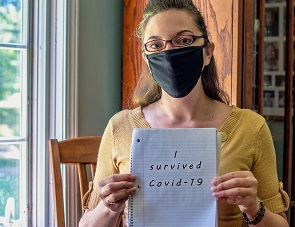 In a blog post, Francis Collins, MD, PhD, director of the US National Institutes of Health (NIH), discusses developments in efforts to understand “long COVID syndrome,” which has people dealing with a range of health problems weeks or even months after contracting COVID-19. A recent global survey of long-haulers, for instance, showed that almost half couldn’t work full time 6 months after developing prolonged COVID-19 symptoms.
In a blog post, Francis Collins, MD, PhD, director of the US National Institutes of Health (NIH), discusses developments in efforts to understand “long COVID syndrome,” which has people dealing with a range of health problems weeks or even months after contracting COVID-19. A recent global survey of long-haulers, for instance, showed that almost half couldn’t work full time 6 months after developing prolonged COVID-19 symptoms.
Within the University of Pennsylvania health system, the in-hospital mortality rate among patients critically ill with COVID-19 fell from 43.5% during the initial phase of the pandemic to 19.2% by the beginning of July, despite no changes in patient acuity and other factors, researchers report in Annals of Internal Medicine. “Further studies are necessary to confirm this result and to investigate causal mechanisms,” they say.
A pilot trial among patients with nonsevere COVID-19 and no risk factors for complicated disease shows that a single dose of ivermectin within 72 hours of fever or cough onset does not affect the proportion of patients with detectable SARS-CoV-2 RNA 7 days later. It was, however, associated with reductions in self-reported anosmia/hyposmia and cough, as well as a tendency toward lower viral loads and IgG titers, according to findings published in EClinicalMedicine. “The positive signal found in this pilot together with emerging evidence from animal models and other clinical trials warrants the conduction of larger trials using ivermectin for the early treatment of COVID-19,” the authors say.
 The Aldi supermarket chain will offer US employees a financial incentive—up to 4 hours of extra pay—to get a COVID-19 vaccine, Reuters reports. The company also said it will implement on-site vaccination clinics at its warehouse and office locations. Other companies, including Dollar General and Instacart, have offered incentives to get vaccinated as well.
The Aldi supermarket chain will offer US employees a financial incentive—up to 4 hours of extra pay—to get a COVID-19 vaccine, Reuters reports. The company also said it will implement on-site vaccination clinics at its warehouse and office locations. Other companies, including Dollar General and Instacart, have offered incentives to get vaccinated as well.
January 18, 2021
The incoming director for the US Centers for Disease Control and Prevention, Rochelle Walensky, MD, warned Sunday on CBS’s “Face the Nation” that the United States will see half a million deaths from COVID-19 by mid-February. "That doesn't speak to the tens of thousands of people who are living with a yet uncharacterized syndrome after they've recovered," said Walensky.
Fully 49 US states are currently at the highest level for new infections, NPR reports, reaching more than 25 new cases per 100,000 people per day, defined as “unchecked community spread.”
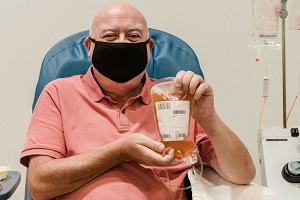
Investigators for the RECOVERY trial have stopped enrollment in the convalescent plasma arm of the study following a meeting of the independent data monitoring committee (DMC) last week. After a preliminary analysis of 10,406 randomized patients hospitalized with COVID-19, rates of 28-day mortality were identical in the two groups, at 18%. “The DMC saw no convincing evidence that further recruitment would provide conclusive proof of worthwhile mortality benefit either overall or in any pre-specified subgroup,” investigators said in press release. Final results will “be published as soon as possible,” and other treatment arms in RECOVERY—looking at tocilizumab, colchicine, aspirin, and Regeneron’s antibody cocktail—are still ongoing.
A modelling study published in Morbidity and Mortality Weekly Report warns that the B.1.1.7 variant of COVID-19 “has the potential to increase the US pandemic trajectory in the coming months,” making mitigation strategies—social distancing, mask use—more urgent than ever. The variant, as of Friday, had only been identified in 76 cases, in 10 states, but will likely become the dominant strain of the virus by March, investigators said.
An early online publication in Nature indicates that memory B cells persist more than 6 months after infection and continue to evolve, “strongly suggestive that individuals who are infected with SARS-CoV-2 could mount a rapid and effective response to the virus upon reexposure,” investigators conclude. That’s welcome news, given prior signs that antibody levels decrease over time and COVID-19 infection has produced variable levels of antibody activity. Memory B cells, on the other hand, “are called upon to produce antibodies upon reinfection,” and the nature and quality of that response has not been previously examined, write Christian Gaebler, MD, and colleagues.
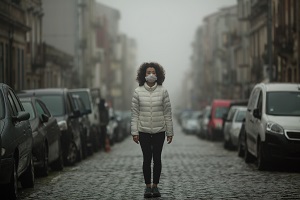 Researchers at the University of Birmingham, using machine learning to tease out the impact of different weather patterns and seasonal variation, conclude that the COVID-19 lockdowns last spring in 11 international cities led to “abrupt” and significant improvements in urban air pollution. Those improvements, however, were not as large as initially believed and were offset by increases in ozone levels. Their findings were published in Science Advances.
Researchers at the University of Birmingham, using machine learning to tease out the impact of different weather patterns and seasonal variation, conclude that the COVID-19 lockdowns last spring in 11 international cities led to “abrupt” and significant improvements in urban air pollution. Those improvements, however, were not as large as initially believed and were offset by increases in ozone levels. Their findings were published in Science Advances.
In a nationally representative US sample, just 6,380 (1.6%) out of 406,446 women hospitalized to give birth over the course of an 8-month study were found to have COVID-19 and the vast majority (98.9%) were discharged home. “Although the absolute risk differences were small, in-hospital death, VTE, and preeclampsia were considerably higher among women who gave birth with COVID-19 than in those without COVID-19,” Karola S. Jerling, MD, and colleagues report in JAMA Internal Medicine.
Also published JAMA Internal Medicine, investigators who conducted a systemic review and meta-analysis based on studies published in peer reviewed journals as well as those uploaded to medRxiv databases as of mid-November conclude that saliva tests for COVID-19 have similar diagnostic accuracy to nasopharyngeal swabs for nucleic acid amplification testing (NAAT). “These findings support larger-scale research on the use of saliva NAAT as an alternative to nasopharyngeal swabs,” they write, and are particularly relevant in the ambulatory setting.
 Katherine J. Wu, PhD, writing in the New York Times, explores emerging theories as to why identical twins can respond so differently to SARS-CoV-2 infection even when infected at the exact same time and setting, and what this tells us about the genetic underpinnings of susceptibility.
Katherine J. Wu, PhD, writing in the New York Times, explores emerging theories as to why identical twins can respond so differently to SARS-CoV-2 infection even when infected at the exact same time and setting, and what this tells us about the genetic underpinnings of susceptibility.
Shelley Wood contributed today’s Dispatch.
January 15, 2021
Pfizer confirmed Friday that it will temporarily reduce deliveries of its COVID-19 vaccine—developed in collaboration with BioNTech—to Europe, to allow for an upgrade of its production capacity, the Associated Press reports. The company is aiming to produce 2 billion doses per year.
The American Heart Association is urging people to get a COVID-19 vaccine. “To that end the Association is a founding supporter of the recently announced Ad Council campaign to encourage vaccination against the virus, which will represent one of the largest public education campaigns in history,” according to a press release.
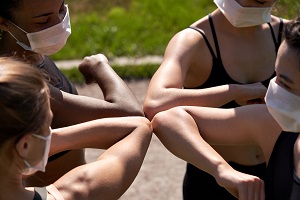 Of 145 competitive university athletes recovering from COVID-19 with mostly mild or moderate symptoms, two (1.4%) had MRI findings consistent with myocarditis, researchers report in JAMA Cardiology, concluding that “the utility of cardiac MRI as a screening tool for myocarditis in this patient population is questionable.” In an accompanying editorial, Jonathan Kim, MD, says, “Based on these results and because of the poor diagnostic yield of acute myocardial inflammation, coupled with the consideration of costs, level of expertise required for interpretation of advanced CMR imaging parametric mapping techniques, and stresses placed on healthcare resources, the utility of universal CMR screening prior to return to play after COVID-19 infection appears low.”
Of 145 competitive university athletes recovering from COVID-19 with mostly mild or moderate symptoms, two (1.4%) had MRI findings consistent with myocarditis, researchers report in JAMA Cardiology, concluding that “the utility of cardiac MRI as a screening tool for myocarditis in this patient population is questionable.” In an accompanying editorial, Jonathan Kim, MD, says, “Based on these results and because of the poor diagnostic yield of acute myocardial inflammation, coupled with the consideration of costs, level of expertise required for interpretation of advanced CMR imaging parametric mapping techniques, and stresses placed on healthcare resources, the utility of universal CMR screening prior to return to play after COVID-19 infection appears low.”
In the United States, some retail pharmacies—including those inside of CVS drugstores and Kroger supermarkets—will not check IDs before administering COVID-19 vaccines, which would allow for people who are not yet eligible to be vaccinated to cut the line, Reuters reports: “US retailers face a choice of strictly enforcing state eligibility rules with on-site identity checks, or rely on an honor system that could allow people to ignore those guidelines but also get more people inoculated.”
The European Medicines Agency (EMA) announced that its safety committee will evaluate monthly safety reports submitted by COVID-19 vaccine manufacturers who have received marketing authorizations. The first such report is expected soon and will be for Comirnaty, the vaccine from Pfizer/BioNTech.
“Vaccine deserts”—areas with a low density of pharmacies, which will have a leading role in administering vaccines—not only threaten to slow the COVID-19 vaccine rollout in the United States, but also may widen disparities, according to a GoodRx report. The bottom line, the authors say, is that additional mass vaccination sites will be needed.
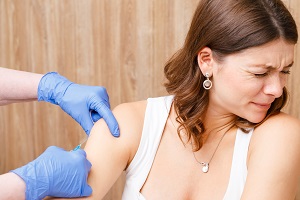 A new international poll, conducted by YouGov and shared exclusively with Reuters, indicates that most people around the world are likely to get vaccinated, with more distrust seen for vaccines made in China and Russia than for those made in Germany or the United States. Willingness to get vaccinated was highest in the UK (73%) and Denmark (70%). Slightly less than half of Americans said they’d be willing to get the shot, however—a figure that has remained relatively stable since July.
A new international poll, conducted by YouGov and shared exclusively with Reuters, indicates that most people around the world are likely to get vaccinated, with more distrust seen for vaccines made in China and Russia than for those made in Germany or the United States. Willingness to get vaccinated was highest in the UK (73%) and Denmark (70%). Slightly less than half of Americans said they’d be willing to get the shot, however—a figure that has remained relatively stable since July.
President-elect Joe Biden, who will take office next Wednesday, has requested $415 billion from Congress to boost the US pandemic response as part of a larger $1.9 trillion stimulus package, STAT reports. The additional funds would be used to scale up various efforts, including vaccinations, testing, contact tracing, and genomic sequencing. Biden also selected David Kessler, MD, former head of the US Food and Drug Administration (FDA), to take over Operation Warp Speed.
A US study published in PLOS ONE confirms the disproportionate impact of COVID-19 on men versus women, showing that men were more likely to test positive and—once hospitalized—were more likely to have complications, require ICU admission and mechanical ventilation, and die.
Another PLOS ONE study identifies factors associated with a greater psychological impact of the COVID-19 pandemic among university students. Women, those who knew somebody who was infected, and those with fair/poor general health status, an age of 18 to 24, or at least 8 hours of screen time daily felt a greater impact.
 A JAMA viewpoint explores the funding of pharmaceutical innovation during and after the COVID-19 pandemic: “The lesson of the COVID-19 experience is that, when innovation in the life sciences is imperative, the traditional reliance on pharmaceutical industry prices and profits is jettisoned in favor of governmental grants and procurement.”
A JAMA viewpoint explores the funding of pharmaceutical innovation during and after the COVID-19 pandemic: “The lesson of the COVID-19 experience is that, when innovation in the life sciences is imperative, the traditional reliance on pharmaceutical industry prices and profits is jettisoned in favor of governmental grants and procurement.”
January 14, 2021
A study of UK healthcare workers indicates that a bout of COVID-19 likely confers immunity for at least 5 months, although even those who are immune may still be able to carry and spread the virus, Reuters reports. The analysis showed that there were only 44 new infections among 6,614 people who had recovered from COVID-19.
There are more results emerging from the Brazilian trial of the Chinese COVID-19 vaccine developed by Sinovac, and they’re at odds with the “fantastic” 78% efficacy reported last week. At a news conference in São Paulo on Tuesday, researchers put the vaccine’s overall efficacy at just 50.38%, CNN reported, scarcely meeting the bar of 50% set by the World Health Organization. China, Indonesia, and now Turkey have already approved the use of the Sinovac vaccine, with Turkish President Tayyip Erdogan receiving his shot on live TV yesterday, the Guardian reported. No public statement has been issued by the company.
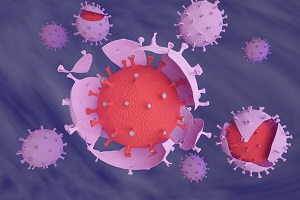 Researchers in Ohio report that they’ve detected two new variants of SARS-CoV-2 that may have originated in the United States, CNBC reports. One of them “carries a mutation identical to the UK strain, but it likely arose in a virus strain already present in the United States,” according to a press release. The other, which has become the dominant strain in the city of Columbus, “acquired three other gene mutations not previously seen together in SARS-CoV-2.” The findings have not yet been peer reviewed.
Researchers in Ohio report that they’ve detected two new variants of SARS-CoV-2 that may have originated in the United States, CNBC reports. One of them “carries a mutation identical to the UK strain, but it likely arose in a virus strain already present in the United States,” according to a press release. The other, which has become the dominant strain in the city of Columbus, “acquired three other gene mutations not previously seen together in SARS-CoV-2.” The findings have not yet been peer reviewed.
Two STAT stories explore the impact of the emergence of new, more-transmissible SARS-CoV-2 variants. Lev Facher details how President-elect Joe Biden’s COVID-19 team is reconsidering its pandemic plan in the context of the new strains, while Andrew Joseph delves into how the variants may exacerbate an already worsening US situation regarding COVID-19 deaths. “If they take off here—which, with their transmission advantages, they will, unless Americans rapidly put a brake on their spread—it will detonate something of a bomb in the already deep, deep hole the country must dig out of to end the crisis,” Joseph writes.
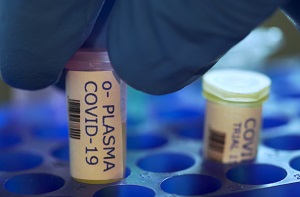 Receipt of convalescent plasma with high versus low levels of antibodies against SARS-CoV-2 is associated with a lower risk of 30-day mortality in hospitalized adults with COVID-19, but only in those who had not received mechanical ventilation, researchers report in the New England Journal of Medicine.
Receipt of convalescent plasma with high versus low levels of antibodies against SARS-CoV-2 is associated with a lower risk of 30-day mortality in hospitalized adults with COVID-19, but only in those who had not received mechanical ventilation, researchers report in the New England Journal of Medicine.
More than 10 million COVID-19 vaccine shots have been administered to Americans, as some states begin to expand eligibility for immunization, Reuters reports. The rollout was slowed as vaccinations were focused on healthcare workers, but now the opportunity to get a shot has been expanded to anyone over age 65.
A one-dose COVID-19 vaccine from Johnson & Johnson appears to safely generate an immune response in healthy volunteers of all ages, according to interim phase I/IIa results in NEJM. The most-frequent adverse events were fatigue, headache, myalgia, and injection-site pain, with fever being the most-common systemic event.
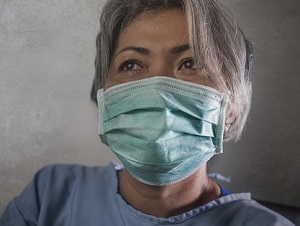 Another randomized trial—this one published in Lancet Respiratory Medicine—is bolstering the view that patients hospitalized for COVID-19 who are already taking ACE inhibitors and ARBs should continue to do so, supporting recommendations from international CV societies. REPLACE CORONA, while small, joins the earlier BRACE CORONA results in assuaging concerns that RAAS inhibitors might be harmful. “In people who fall ill with COVID-19 requiring hospital admission, continuing these medications for established indications should be considered safe,” one of the PIs of the trial told TCTMD.
Another randomized trial—this one published in Lancet Respiratory Medicine—is bolstering the view that patients hospitalized for COVID-19 who are already taking ACE inhibitors and ARBs should continue to do so, supporting recommendations from international CV societies. REPLACE CORONA, while small, joins the earlier BRACE CORONA results in assuaging concerns that RAAS inhibitors might be harmful. “In people who fall ill with COVID-19 requiring hospital admission, continuing these medications for established indications should be considered safe,” one of the PIs of the trial told TCTMD.
COVID-19 cases among children, teens, and young adults in the United States have increased since last summer, “with weekly incidence higher in each successively increasing age group,” according to a study in Morbidity and Mortality Weekly Report. There were indications that young adults might contribute more to community transmission than do younger children. “To enable safer in-person learning, schools and communities should fully implement and strictly adhere to multiple mitigation strategies, especially universal and proper mask wearing, to reduce both school and community COVID-19 incidence to help protect students, teachers, and staff members from COVID-19.”
The COVID-19 pandemic has been associated with an excess of cerebrovascular deaths in the United States, according to a study in Stroke. That excess mortality was associated with decreases in stroke-related EMS calls nationally, as well as mobility at the state level. “Our results suggest that during the pandemic, social distancing behavioral changes may have been a factor in the decrease in seeking medical care for acute, life-threatening conditions like stroke, resulting in excess cerebrovascular-related deaths,” the researchers say.
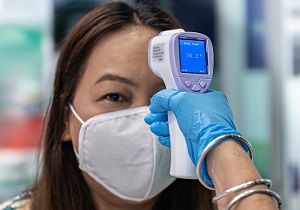 Two members of the World Health Organization (WHO) delegation sent to China to investigate the origins of the pandemic had to remain in Singapore after testing positive for SARS-CoV-2 antibodies, Reuters reports. All 15 members of the team had tested negative when leaving their home countries, and the two positive test results came while they were passing through Singapore. “It is the latest setback for a mission beset by delay as well as concern over how much access the team will get,” according to the story.
Two members of the World Health Organization (WHO) delegation sent to China to investigate the origins of the pandemic had to remain in Singapore after testing positive for SARS-CoV-2 antibodies, Reuters reports. All 15 members of the team had tested negative when leaving their home countries, and the two positive test results came while they were passing through Singapore. “It is the latest setback for a mission beset by delay as well as concern over how much access the team will get,” according to the story.
January 13, 2021
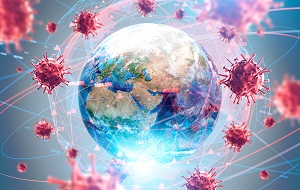 There are more signs that the pandemic is continuing unabated around the world: Japan expanded a state of emergency to seven more prefectures, affecting more than half of its population; the German health minister said the country will not be able to lift all pandemic-related restrictions by the beginning of February; restrictions have been tightened in several more regions of Spain; and China saw its biggest daily rise in COVID-19 cases in more than 5 months, prompting additional lockdowns affecting millions of people.
There are more signs that the pandemic is continuing unabated around the world: Japan expanded a state of emergency to seven more prefectures, affecting more than half of its population; the German health minister said the country will not be able to lift all pandemic-related restrictions by the beginning of February; restrictions have been tightened in several more regions of Spain; and China saw its biggest daily rise in COVID-19 cases in more than 5 months, prompting additional lockdowns affecting millions of people.
Indonesia has started a large-scale COVID-19 vaccination effort spanning the sprawling archipelago, with President Joko Widodo receiving the first shot of the Chinese-made Sinovac Biotech vaccine, the Associated Press reports. The program “poses massive challenges in a country whose thousands of islands stretch across an area about as wide as the continental United States and where transportation and infrastructure are limited in many places.”
Most people traveling to the United States by air will be required to present a negative COVID-19 test result to enter the country according to a new order signed by the director of the US Centers for Disease Control and Prevention (CDC), Reuters reports. The rule, which goes into effect on January 26, states that “nearly all travelers including US citizens must show a negative test within 3 days of departure or documentation of recovery from COVID-19.” It applies to all travelers ages 2 and older, except for those only passing through the US.
A more-infectious strain of SARS-CoV-2 first detected in South Africa might hamper the effectiveness of antibody treatments used to prevent severe illness in patients with COVID-19, Anthony Fauci, MD, director of the US National Institute of Allergy and Infectious Diseases, said Tuesday, CNBC reports. “It could be having some impact on protection for the monoclonal antibodies and perhaps even for the vaccine. We don’t know that,” Fauci said at a preparedness forum.
A new plan to expand access to COVID-19 vaccination to tens of millions more people in the United States immediately, introduced abruptly on Tuesday, is likely to cause problems, STAT’s Helen Branswell reports. “The move all but ensures the current narrative around the vaccine rollout—it’s too slow—will shift, but not in a positive direction: the incoming Biden administration will likely face a groundswell of complaints about long lines, failed efforts to find vaccine supplies, and an inequitable distribution system as it tries to live up to its promise of seeing 100 million vaccine doses administered in the new president’s first 100 days in office.”
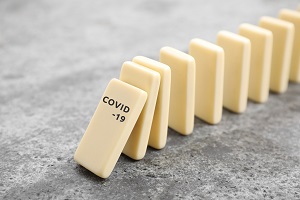 Two new studies published in the Journal of the American College of Cardiology—one focused on the United States, the second global in scope—are highlighting the impact the COVID-19 pandemic has had on patients with known or suspected cardiovascular disease. In one, US investigators confirmed that death from ischemic and hypertensive heart disease increased in 2020. And the other showed that fewer invasive and noninvasive diagnostic procedures for heart disease were performed around the world, particularly in some of the poorer regions. TCTMD’s Michael O’Riordan has the story.
Two new studies published in the Journal of the American College of Cardiology—one focused on the United States, the second global in scope—are highlighting the impact the COVID-19 pandemic has had on patients with known or suspected cardiovascular disease. In one, US investigators confirmed that death from ischemic and hypertensive heart disease increased in 2020. And the other showed that fewer invasive and noninvasive diagnostic procedures for heart disease were performed around the world, particularly in some of the poorer regions. TCTMD’s Michael O’Riordan has the story.
US greenhouse gas emissions dropped by more than 10% during 2020, “reaching their lowest levels in at least three decades as the coronavirus pandemic slammed the brakes on the nation’s economy,” the New York Times reports. The Rhodium Group, which released the estimates, said it was the single largest decline in annual emissions since World War II, with levels falling below those seen in 1990 for the first time.
 New survey data released by the Society for Cardiovascular Angiography and Interventions (SCAI), in conjunction with DEFINITION6, confirm that Americans are avoiding doctors’ offices and delaying routine care during COVID-19-related fears. Responses show that nearly 40% of people still do not feel safe going to see their doctors. More than half indicated they would not be comfortable scheduling a medical procedure at this time. Fears were especially prevalent among African-American and Latinx respondents.
New survey data released by the Society for Cardiovascular Angiography and Interventions (SCAI), in conjunction with DEFINITION6, confirm that Americans are avoiding doctors’ offices and delaying routine care during COVID-19-related fears. Responses show that nearly 40% of people still do not feel safe going to see their doctors. More than half indicated they would not be comfortable scheduling a medical procedure at this time. Fears were especially prevalent among African-American and Latinx respondents.
Data from 37 European countries, published in Morbidity and Mortality Weekly Report, indicate that earlier implementation of mitigation strategies appears to be an important way to prevent COVID-19 transmission and reduce related deaths. Those countries that put such policies in place earlier tended to have fewer COVID-19 deaths through the end of June 2020 compared with nations that employed the same strategies, but later.
Composition of the gut microbiome is altered in patients with COVID-19, regardless of medication use, researchers report in Gut, saying, “Associations between gut microbiota composition, levels of cytokines, and inflammatory markers in patients with COVID-19 suggest that the gut microbiome is involved in the magnitude of COVID-19 severity possibly via modulating host immune responses.”
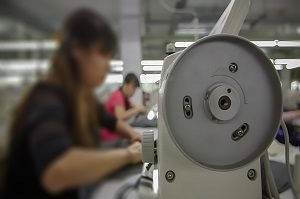 A commentary in Annals of Internal Medicine draws attention to the role forced labor plays in maintaining the supply of personal protective equipment for healthcare workers during the pandemic: “If medicine truly wants to bring its actions in line with its oath to do no harm, it can no longer turn a blind eye to where the tools of its trade come from,” the authors write. “To contain the human cost of the pandemic, there is no doubt that we should maximize effective use of PPE, but we must also ensure better work practices for those who enable us to wear it in the first place.”
A commentary in Annals of Internal Medicine draws attention to the role forced labor plays in maintaining the supply of personal protective equipment for healthcare workers during the pandemic: “If medicine truly wants to bring its actions in line with its oath to do no harm, it can no longer turn a blind eye to where the tools of its trade come from,” the authors write. “To contain the human cost of the pandemic, there is no doubt that we should maximize effective use of PPE, but we must also ensure better work practices for those who enable us to wear it in the first place.”
January 12, 2021
 UK hospitals are running out of space, leading to the return of temporary morgues seen during the first surge of the pandemic last spring, Reuters reports. Britain is seeing record levels of cases and deaths as a more-transmissible variant of the virus circulates, particularly around London and southeast England.
UK hospitals are running out of space, leading to the return of temporary morgues seen during the first surge of the pandemic last spring, Reuters reports. Britain is seeing record levels of cases and deaths as a more-transmissible variant of the virus circulates, particularly around London and southeast England.
Moderna said Monday at a healthcare conference that immunity from its COVID-19 vaccine should last at least a year, Reuters reports. The company also said “it was confident that the messenger RNA (mRNA) technology it used was well suited to deploy a vaccine based on the new variant of the coronavirus which has emerged in a handful of countries.”
In Russia, authorities said a 150-person clinical trial will test whether a one-dose “Sputnik-Light” version of its COVID-19 vaccine can be effective against the virus. If successful, it could introduce a way to stretch vaccine supplies further. More than 1 million Russians have been vaccinated with the original two-dose version of the Sputnik V vaccine so far.
The European Medicines Agency (EMA) has received an application for conditional marketing authorization of the COVID-19 vaccine developed by AstraZeneca and the University of Oxford. The agency said the vaccine will be assessed on an accelerated time line, with a decision possibly coming on January 29 after a meeting of its safety committee.
 As the pandemic drags on, lessons learned in how to address COVID-19 and its fallout mean that not only acute but also elective procedures, including cardiac interventions, are now possible—when carefully planned. The European Association of Percutaneous Cardiovascular Interventions (EAPCI) last week released advice on how to balance clinical need against safety, with an eye toward regional differences in resources. TCTMD’s Caitlin Cox has the story.
As the pandemic drags on, lessons learned in how to address COVID-19 and its fallout mean that not only acute but also elective procedures, including cardiac interventions, are now possible—when carefully planned. The European Association of Percutaneous Cardiovascular Interventions (EAPCI) last week released advice on how to balance clinical need against safety, with an eye toward regional differences in resources. TCTMD’s Caitlin Cox has the story.
Data in JAMA Pediatrics indicate that the rate of hospitalization for COVID-19 in the pediatric population in the United States has veered upward as the pandemic has progressed. Between the middle of May and the middle of November 2020, the average cumulative hospitalization rate across 22 states increased from 2.0 to 17.2 per 100,000 children. “As conversations around in-person education continue, hospitalization growth may offer reasons for concern,” the researchers say.
A PNAS review looks into the evidence around the use of face masks to combat spread of SARS-CoV-2, with the authors concluding, “The preponderance of evidence indicates that mask wearing reduces transmissibility per contact by reducing transmission of infected respiratory particles in both laboratory and clinical contexts. Public mask wearing is most effective at reducing spread of the virus when compliance is high.” They recommend wearing cloth masks in public along with adhering to hygiene, distancing, and contact-tracing strategies.
 The most rigorous effort to date to gauge the quality of research related to COVID-19 published in the pandemic’s first wave—published in BMC Medical Research Methodology—has confirmed the grim findings of earlier reports: the vast majority of papers lacked original data, adequate numbers, or weren’t reliable due to other, significant study flaws. “The study is not to blame anyone,” the senior investigator told TCTMD’s Michael O’Riordan. “Within the scientific and medical community, as the virus started to spread, everyone wanted to do something. There was a race to publish, and the journals were faced with a flood of papers. It was an epidemic of scientific papers within a global pandemic. It was unprecedented.”
The most rigorous effort to date to gauge the quality of research related to COVID-19 published in the pandemic’s first wave—published in BMC Medical Research Methodology—has confirmed the grim findings of earlier reports: the vast majority of papers lacked original data, adequate numbers, or weren’t reliable due to other, significant study flaws. “The study is not to blame anyone,” the senior investigator told TCTMD’s Michael O’Riordan. “Within the scientific and medical community, as the virus started to spread, everyone wanted to do something. There was a race to publish, and the journals were faced with a flood of papers. It was an epidemic of scientific papers within a global pandemic. It was unprecedented.”
COVID-19 patients with higher serum vitamin D levels have lower risks of in-hospital mortality and need for invasive mechanical ventilation, according to a retrospective study in Mayo Clinic Proceedings. Without randomized trials, it remains unclear whether vitamin D supplementation can improve outcomes of COVID-19. Such trials are warranted, the researchers say.
 Two gorillas at the San Diego Zoo Safari Park in Escondido, CA, tested positive for SARS-CoV-2 last week, NPR reports. They were tested after developing coughs and other mild symptoms. The infections are not expected represent a threat to the public, as “the park is currently closed to visitors, and even under normal operating circumstances, there is no logical reason guests would come into contact with a 300-pound gorilla.” There have been previous reports of SARS-CoV-2 infections in other species, including tigers, minks, and domesticated cats and dogs.
Two gorillas at the San Diego Zoo Safari Park in Escondido, CA, tested positive for SARS-CoV-2 last week, NPR reports. They were tested after developing coughs and other mild symptoms. The infections are not expected represent a threat to the public, as “the park is currently closed to visitors, and even under normal operating circumstances, there is no logical reason guests would come into contact with a 300-pound gorilla.” There have been previous reports of SARS-CoV-2 infections in other species, including tigers, minks, and domesticated cats and dogs.
January 11, 2021

A postholiday surge has shifted the distribution of COVID-19 cases around the United States, the New York Times reports. Whereas earlier outbreaks tended to be regional, affecting states with shared borders, the five worst-hit states are now “scattered around the country: Arizona, California, Oklahoma, Rhode Island, and South Carolina.” The United States has reached nearly 22.5 million positive cases (six thousand per million) and more than 374,000 deaths.
Elsewhere, the Republic of Ireland has rocketed into first place by case count, with the most confirmed cases per million (10.1 thousand) of any country in the world; Chinese officials say they’ve administered 9 million vaccine doses but have placed a new lockdown on Beijing as cases spike anew. In Africa, the number of cases now surpasses 3 million, nearly one-third of which are in South Africa; the Canadian province of Quebec imposed the country’s first overnight curfew to curb infections, an option neighboring Ontario is now considering; and a new variant has been identified in Japan among four travelers from Brazil.
A modelling study by Edge Health, reported in the Guardian, estimates that one and five people in England have already been infected with the virus—a rate five times higher than the official numbers. In some London-area boroughs, the rate may be as high as one in two, the model indicates.

Another study—this one from China—confirms that symptoms can continue at least half a year after diagnosis. “At 6 months after acute infection, COVID-19 survivors were mainly troubled with fatigue or muscle weakness, sleep difficulties, and anxiety or depression,” Chaolin Huang, MD, and colleagues report in the Lancet. “Patients who were more severely ill during their hospital stay had more severe impaired pulmonary diffusion capacities and abnormal chest imaging manifestations, and are the main target population for intervention of long-term recovery.”
From the outset of the pandemic, scientists have debated whether the micro- and macrothrombotic disease seen in the lung and other organs represents direct endothelial cell damage by the virus or a secondary immune system effect. Now, in a research letter in Circulation, Ian R. McCracken, BSc, et al examine transcriptomic and epigenomic data on human endothelial cells in the setting of SARS-Cov-2 and its viral proteins, finding no evidence of a direct viral impact. “The endothelial damage reported in severely ill COVID-19 patients is more likely secondary to infection of neighboring cells and/or other mechanisms, including immune cells, platelets and complement activation, and circulating proinflammatory cytokines,” they say.
Wuhan, China, was the first place to report the COVID-19 outbreak, peaking in February 2020, but it was also one of the first to announce it had got the virus under control. Using antibody tests that have grown increasingly more sophisticated over the last 12 months, however, researchers say that thousands of people continued to be infected asymptomatically between March and May 2020. “Virulent SARS-CoV-2 strains may still cause symptoms in extremely susceptible individuals and it may also revert to a highly virulent strain to reignite the epidemic of COVID-19 in China,” they warn in PLOS Neglected Tropical Diseases.

An overlooked area of research in the battle against COVID-19 has been vaccines or medications that shorten the infectious period, Bruce Lee, MD, MBA, and colleagues argue in PLOS Computational Biology. In their computational simulations, investigators estimate that if just one-quarter of infected individuals were treated with such an agent, cutting the period of contagiousness by half a day could avoid 1.4 million new infections and 99,000 hospitalizations, as well as save $209.5 billion in direct and indirect costs. “There may be a tendency to overlook vaccines and other treatments that don't prevent a COVID-19 infection or cure disease,” Lee said in a press statement.
A new tool developed by the UK Coronavirus Clinical Characterisation Consortium (ISARIC4C), launched last Friday, can help predict the likelihood of deterioration in hospitalized COVID-19 patients. The online calculator assesses 11 measurements to deliver a risk score: age, gender, acquisition of infection in hospital or community, existence of infiltrates on lung X-ray, impairment of consciousness level as defined by the Glasgow Coma Scale, respiratory rate, oxygen saturation on finger probe, blood C-reactive protein levels, blood level of urea, blood lymphocyte count, and supplemental oxygen needs. Validation of the tool is based on a study being published “soon” in Lancet Respiratory Medicine, a press release notes.

People who complete a 7-day quarantine following exposure to COVID-19, remain asymptomatic, and subsequently test negative on PCR at day 7 are unlikely to test positive over the next week, according to an analysis following a policy change in Vermont geared towards shortening quarantine periods. A paper in Morbidity and Mortality Weekly Report describes the shorter quarantine policy undertaken in the state and its validation, concluding: “This assessment supports Vermont’s policy as being effective and offers data to support recommendations to shorten quarantine with testing such as those provided in CDC’s updated quarantine guidance.”
Shelley Wood contributed today’s Dispatch.
January 8, 2021
 “One in 30 Londoners now has COVID-19,” says the mayor of London, England, who declared today to be “a ‘major incident’ due to the rapid spread of the coronavirus across the capital and the increase of COVID-19 cases in hospitals, which has left the NHS at risk of being overwhelmed.”
“One in 30 Londoners now has COVID-19,” says the mayor of London, England, who declared today to be “a ‘major incident’ due to the rapid spread of the coronavirus across the capital and the increase of COVID-19 cases in hospitals, which has left the NHS at risk of being overwhelmed.”
In Lebanon, where the health system is still reeling from the port explosion that shook Beirut in August 2020, hospitals are now turning away COVID-19-positive patients. “Jean Nakhoul, an executive producer for Lebanon's MTV channel, says his family has been calling around the country and finding no medical treatment for his 83-year-old grandmother who is sick with COVID-19,” NPR reports. Nakhoul eventually found a hospital with one spot still open but was told it would be held for a younger patient.
The US Food and Drug Administration (FDA) issued an alert today warning that the B.1.1.7 COVID-19 variant may produce a false-negative result on testing. “The FDA is taking additional actions to ensure authorized tests remain accurate by working with test developers and conducting ongoing data analysis to evaluate all currently authorized molecular tests. The FDA believes the risk that these mutations will impact overall testing accuracy is low,” the statement reads.
The European Association of Percutaneous Cardiovascular Interventions has issued a position statement detailing considerations for juggling elective invasive cardiac procedures alongside rising COVID-19 hospitalizations. “During the different waves of the COVID-19 pandemic we have to face the problems of how to perform elective cardiac invasive procedures in non-COVID patients and which patients/procedures should be prioritized,” write Alaide Chieffo, MD, and colleagues. “In this context, the interplay between the pandemic stage, the availability of healthcare resources, and the priority of specific cardiac disorders is crucial.” “Wednesday’s storming of the US Capitol did not just overshadow one of the deadliest days of the coronavirus pandemic—it could have contributed to the crisis as a textbook potential superspreader,” health experts told the Washington Post. There were few face coverings but plenty of shouting, jostling, and crowded conditions; with many of the rioters now returning home to cities around the country, it will be difficult to track infections. “It is a very real possibility that this will lead to a major outbreak but one that we may or may not be able to recognize,” said Eric Toner, MD, of the Johns Hopkins Center for Health Security.
“Wednesday’s storming of the US Capitol did not just overshadow one of the deadliest days of the coronavirus pandemic—it could have contributed to the crisis as a textbook potential superspreader,” health experts told the Washington Post. There were few face coverings but plenty of shouting, jostling, and crowded conditions; with many of the rioters now returning home to cities around the country, it will be difficult to track infections. “It is a very real possibility that this will lead to a major outbreak but one that we may or may not be able to recognize,” said Eric Toner, MD, of the Johns Hopkins Center for Health Security.
In the BMJ, Gareth Iacobucci and Elisabeth Mahase explore the potential downsides of delaying the second dose of approved COVID-19 vaccines, an option that’s being weighed as some governments opt to use available doses to vaccinate as many people as possible, rather than holding back booster shots. In the UK, four chief medical officers suggested that the second dose could be delayed as much as 12 weeks—something that was tested in small numbers in trials of the Oxford/AstraZeneca vaccine but not the Pfizer/BioNTech product.
US President-elect Joe Biden said today that he would release all available doses of the vaccine to offer some protection to as many people as possible, “a sharp break from the Trump administration’s practice of holding back some of the vaccine,” the New York Times reports.
At a press conference yesterday, investigators in Brazil who’ve been testing the Chinese Sinovac vaccine announced they have had “fantastic” results. The investigational vaccine “was safe and had 78% efficacy in preventing mild cases of COVID-19 in a study of more than 12,000 healthcare workers,” spokespeople said, while “completely” preventing serious illness. An article in Science explores why skepticism continues to hound this vaccine candidate.
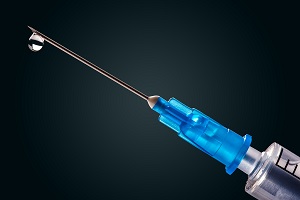 The European Medicines Agency (EMA) has issued updated product information for the Pfizer/BioNTech vaccine (Comirnaty) with recommendations on how to extract the additional sixth dose from a single vaccine vial. As previously reported by TCTMD, as originally authorized, the vials were first described as containing five doses. In their updated guidance, the EMA recommends that low dead-volume syringes and/or needles be used, since standard syringes and needles will not leave enough of the vaccine in the vial to eke out that sixth dose. Residual doses of vaccine from different vials should not be combined, they add.
The European Medicines Agency (EMA) has issued updated product information for the Pfizer/BioNTech vaccine (Comirnaty) with recommendations on how to extract the additional sixth dose from a single vaccine vial. As previously reported by TCTMD, as originally authorized, the vials were first described as containing five doses. In their updated guidance, the EMA recommends that low dead-volume syringes and/or needles be used, since standard syringes and needles will not leave enough of the vaccine in the vial to eke out that sixth dose. Residual doses of vaccine from different vials should not be combined, they add.
Parts of the US with large colleges or universities that opted for remote instruction at the start of last fall experienced a 17.9% decrease in incidence of COVID-19 during the first 3 weeks, whereas those with postsecondary schools that offered in-person instruction experienced a 56% increase in incidence when compared with the 21-day period before class. By contrast, “counties without large colleges or universities experienced a 6% decrease in incidence during similar time frames,” researchers write in Morbidity and Mortality Weekly Report.
A separate MMWR analysis links infections on campus with on- and off-campus fraternity and sorority gatherings within the first 2 weeks of the academic year at an Arkansas University, where there was a rapid rise in COVID-19 infections. Most students had classes with virtual instruction; fully “91% of gatherings were associated with fraternity or sorority activities,” researchers report.
 A French study addressing olfactory and gustatory symptoms among more than 800 healthcare workers and outpatients with a known COVID-19 exposure found that patient-reported smell- and taste-related symptoms were common in those who subsequently tested positive for SARS-CoV-2, but at lower rates than had been seen in other studies of patients who’ve already received a diagnosis. Combining patient-reported symptoms with clinical testing for olfactory dysfunction—here, using the CODA test involving detecting and rating the intensity of lemongrass, mint, and lavender—increased sensitivity. Of note, 4% of patients in this JAMA Otolaryngology-Head & Neck Surgery study who tested negative also reported problems with smell or taste.
A French study addressing olfactory and gustatory symptoms among more than 800 healthcare workers and outpatients with a known COVID-19 exposure found that patient-reported smell- and taste-related symptoms were common in those who subsequently tested positive for SARS-CoV-2, but at lower rates than had been seen in other studies of patients who’ve already received a diagnosis. Combining patient-reported symptoms with clinical testing for olfactory dysfunction—here, using the CODA test involving detecting and rating the intensity of lemongrass, mint, and lavender—increased sensitivity. Of note, 4% of patients in this JAMA Otolaryngology-Head & Neck Surgery study who tested negative also reported problems with smell or taste.
Shelley Wood contributed today’s Dispatch.
January 7, 2021
The number of confirmed COVID-19 cases in the United States crossed 21 million less than a week after cresting 20 million on New Year’s Day, with the number of patients currently hospitalized reaching a record of 130,834 late Tuesday, Reuters reports. That day saw the second highest single-day death toll (3,684), meaning an American died from COVID-19 every 24 seconds.
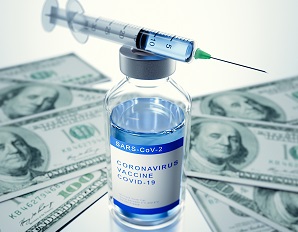 Should people be paid in order to increase uptake of COVID-19 vaccination? Authors of a JAMA viewpoint “maintain that payment for vaccination is morally suspect, likely unnecessary, and may be counterproductive.” They argue that “a policy of paying people for COVID-19 vaccination should be adopted only as a last resort if voluntary vaccine uptake proves insufficient to promote herd immunity within a reasonable period of time. Public funds would be better spent advancing other evidence-based proposals to increase voluntary vaccine uptake.”
Should people be paid in order to increase uptake of COVID-19 vaccination? Authors of a JAMA viewpoint “maintain that payment for vaccination is morally suspect, likely unnecessary, and may be counterproductive.” They argue that “a policy of paying people for COVID-19 vaccination should be adopted only as a last resort if voluntary vaccine uptake proves insufficient to promote herd immunity within a reasonable period of time. Public funds would be better spent advancing other evidence-based proposals to increase voluntary vaccine uptake.”
Results of a small randomized trial published in the New England Journal of Medicine indicate that use of convalescent plasma earlier in the course of COVID-19 can be beneficial. Among older patients within 72 hours after the onset of mild symptoms, severe respiratory disease developed in 16% of those who received high-titer plasma and 31% of those who received placebo, a relative risk reduction of 48%.
Researchers from the US Centers for Disease Control and Prevention (CDC) released information on allergic reactions among people who received the first dose of the Pfizer/BioNTech COVID-19 vaccine. From December 14 to 23, 21 cases of anaphylaxis were reported after nearly 1.9 million first doses, most (71%) occurring within 15 minutes of administration—that’s 11.1 cases per million doses. Based on this information, the authors conclude that anaphylaxis “appears to be a rare event” with this vaccine.
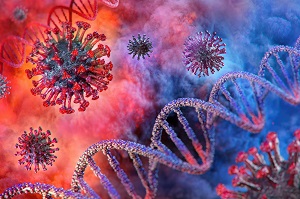 As scientists monitor the more-transmissible SARS-CoV-2 variant first identified in the United Kingdom and now found in dozens of other countries, they are also investigating a new mutation, first identified in samples from South Africa and now in Brazil, that could make it easier for the virus to sidestep protection conferred by vaccines, STAT reports. “It’s not that the mutation will render existing vaccines useless, scientists stress. The vaccines authorized so far and those in development produce what’s called a polyclonal response, generating numerous antibodies that home in on different parts of the virus. Changes to any of those target sites raise the possibility that the vaccines would be less effective, not that they won’t work at all.”
As scientists monitor the more-transmissible SARS-CoV-2 variant first identified in the United Kingdom and now found in dozens of other countries, they are also investigating a new mutation, first identified in samples from South Africa and now in Brazil, that could make it easier for the virus to sidestep protection conferred by vaccines, STAT reports. “It’s not that the mutation will render existing vaccines useless, scientists stress. The vaccines authorized so far and those in development produce what’s called a polyclonal response, generating numerous antibodies that home in on different parts of the virus. Changes to any of those target sites raise the possibility that the vaccines would be less effective, not that they won’t work at all.”
A preprint posted Wednesday provides a systematic summary of ongoing or completed RCTs exploring antithrombotic strategies in patients with COVID-19. The bottom line is that the optimal approach remains to be seen, with several trials still ongoing, investigators say.
A meta-analysis in the American Journal of Cardiology suggests that aspirin use is not related to mortality in patients with COVID-19. Mortality rate was 22.6% in aspirin users and 18.3% in nonusers, a nonsignificant difference (RR 1.12; 95% CI 0.84-1.50). “While patients on aspirin tend to have more risk factors for severe COVID-19 infection (eg, older age, coronary artery disease, diabetes mellites), the low heterogeneity in this analysis despite differences in characteristics of the population of the included studies likely suggests no protective effect of aspirin among different groups of patients,” the authors conclude.
A study in ESC Heart Failure shows that at a single UK center, the 30-day case-fatality rate among patients presenting with acute heart failure was nearly doubled (21% vs 11%) in the 8 weeks after the first UK death due to COVID-19, as compared with before. “The study highlights the need for widespread preventative and shielding measures particularly in this group of patients especially in the light of the second wave,” the authors say.
Among patients with acute stroke, there was no difference in use of reperfusion therapies based on COVID-19 status in a multicenter study published in Stroke. However, median door-to-puncture time was longer in the COVID-19 group, and patients with confirmed or suspected COVID-19 were significantly more likely to die in the hospital or be dependent at discharge.
Showing people geographic COVID-19 prevalence maps doesn’t necessarily improve public knowledge, risk perception, or the intent to adhere to health guidelines, researchers report in JAMA Network Open. Presenting cases per capita using state-level heat maps may be better than using county-level bubble maps, they suggest.
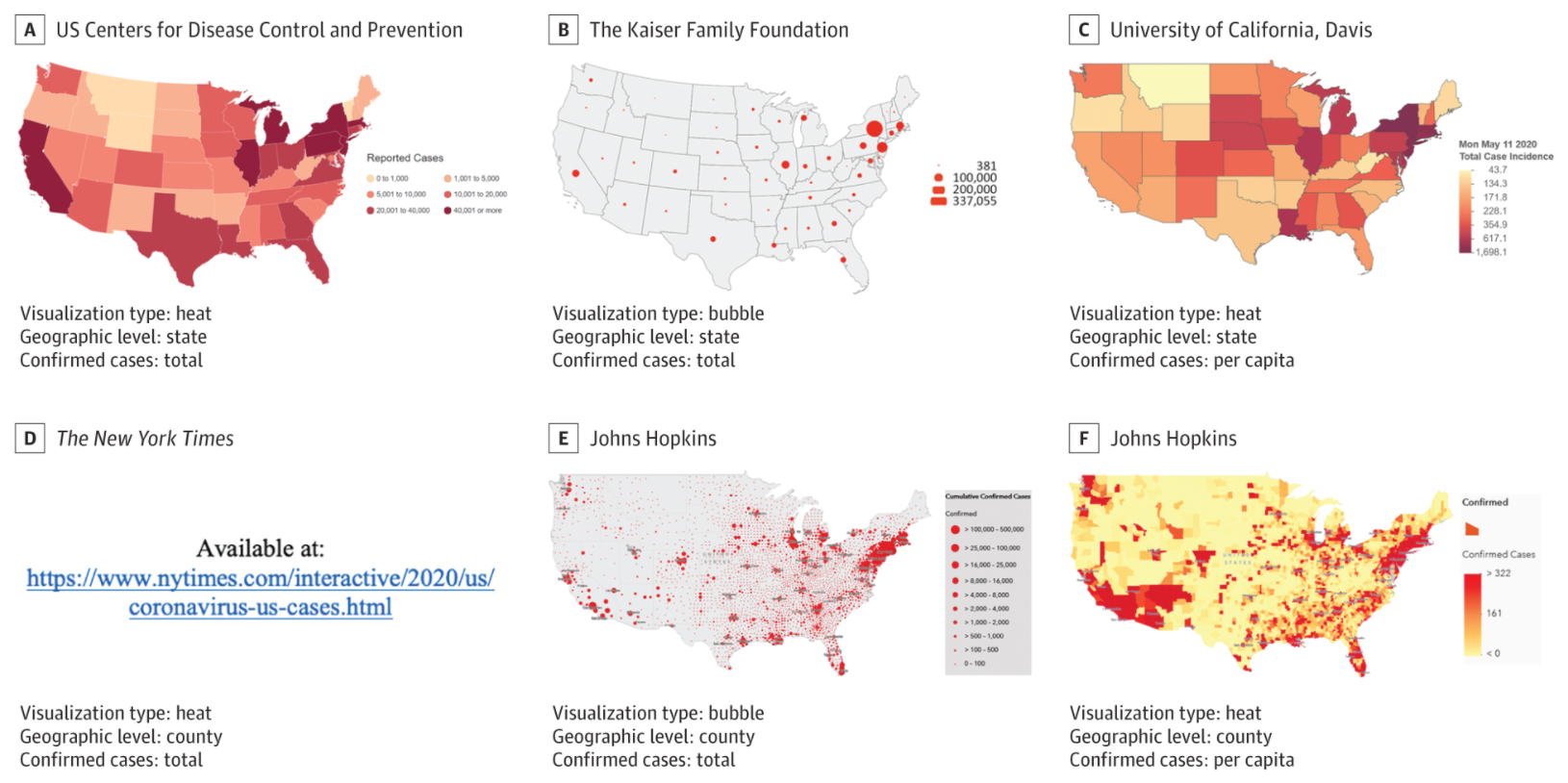
January 6, 2021
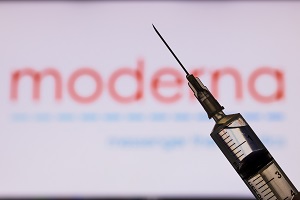 Moderna’s COVID-19 vaccine is heading to Europe, following the European Medicines Agency (EMA) recommendation today granting a conditional marketing authorization in people 18 and older. That follows the authorization of the vaccine from Pfizer and BioNTech for people 16 and older last month. A phase III trial showed that Moderna’s vaccine is 94.1% effective at reducing symptomatic COVID-19.
Moderna’s COVID-19 vaccine is heading to Europe, following the European Medicines Agency (EMA) recommendation today granting a conditional marketing authorization in people 18 and older. That follows the authorization of the vaccine from Pfizer and BioNTech for people 16 and older last month. A phase III trial showed that Moderna’s vaccine is 94.1% effective at reducing symptomatic COVID-19.
Hospitals in Peru and Bolivia are being stretched to capacity amid a surge of COVID-19 cases, with critical-care wards “at or near collapse after end-of-year holidays, reflecting wider regional public health capacity concerns as much of Latin America struggles to secure adequate COVID-19 vaccine supplies,” Reuters reports.
On Tuesday, World Health Organization (WHO) Director-General Tedros Adhanom Ghebreyesus expressed disappointment about China not yet allowing investigators into the country to look into the origins of the COVID-19 pandemic. However, a Chinese government spokesperson said details are just being worked out, Reuters reports. “There’s no need to overinterpret this,” she said.
Nancy Messonnier, MD, the director of the National Center for Immunization and Respiratory Diseases (NCIRD) who is leading the CDC’s COVID-19 vaccination efforts, told STAT that the slow US rollout should speed up soon. “I really expect the pace of administration to go up pretty massively in the next couple weeks,” she said, noting that the vaccines are based on a new mRNA platform that comes with unique distribution, storage, and administration protocols that hospitals have to get used to. The vaccines also started arriving over the holidays during a time of surging COVID-19 numbers, contributing to delays. Anthony Fauci, MD, director of the National Institute of Allergy and Infectious Diseases (NIAID), told the Associated Press that the US could soon be vaccinating 1 million people per day.
 An analysis in JAMA Network Open estimates that there were 46.9 million SARS-CoV-2 infections, 28.1 million symptomatic infections, 956,000 hospitalizations, and 305,000 deaths related to COVID-19 in the United States through the middle of November. An estimated 14.3% of the US population had been infected with the virus by that time. “The SARS-CoV-2 disease burden may be much larger than reported COVID-19 cases owing to underreporting,” the researchers say. “Even after adjusting for underreporting, a substantial gap remains between the estimated proportion of the population infected and the proportion infected required to reach herd immunity.”
An analysis in JAMA Network Open estimates that there were 46.9 million SARS-CoV-2 infections, 28.1 million symptomatic infections, 956,000 hospitalizations, and 305,000 deaths related to COVID-19 in the United States through the middle of November. An estimated 14.3% of the US population had been infected with the virus by that time. “The SARS-CoV-2 disease burden may be much larger than reported COVID-19 cases owing to underreporting,” the researchers say. “Even after adjusting for underreporting, a substantial gap remains between the estimated proportion of the population infected and the proportion infected required to reach herd immunity.”
A phase II/III trial evaluating a combination investigational monoclonal antibody therapy for mild-to-moderate COVID-19 has begun as part of the ACTIV-2 study, the US National Institutes of Health (NIH) announced. The trial will initially enroll 220 participants who are at risk for disease progression.
Olfactory dysfunction is more common in patients with mild versus moderate-to-critical COVID-19 (85.9% vs 71.1%), according to data from 18 European hospitals published in the Journal of Internal Medicine. The problem lingered for some—at 6 months, about 5% of patients had not yet recovered their sense of smell.
 Despite some claims to the contrary, there is no evidence that COVID-19 vaccines cause infertility, according to a Yahoo Life story: “As state and federal officials work to expedite the distribution of the Moderna and Pfizer vaccines to healthcare workers and long-term care facility residents, experts worry that a dangerous myth linking the COVID-19 vaccines to infertility may further hinder efforts to deliver them safely and quickly.”
Despite some claims to the contrary, there is no evidence that COVID-19 vaccines cause infertility, according to a Yahoo Life story: “As state and federal officials work to expedite the distribution of the Moderna and Pfizer vaccines to healthcare workers and long-term care facility residents, experts worry that a dangerous myth linking the COVID-19 vaccines to infertility may further hinder efforts to deliver them safely and quickly.”
January 5, 2021
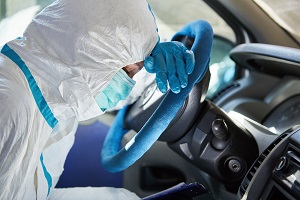 In Los Angeles County, the COVID-19 situation has deteriorated to the point that ambulance crews have been told to cut back on their use of oxygen and to not bring patients with little chance of survival to hospitals, the Los Angeles Times reports. “The measures were taken as circumstances are expected to become even worse in coming weeks, when patients sickened over the Christmas holiday will need treatment, leaving officials desperate for ways to increase capacity and triage care to focus on the sickest patients.”
In Los Angeles County, the COVID-19 situation has deteriorated to the point that ambulance crews have been told to cut back on their use of oxygen and to not bring patients with little chance of survival to hospitals, the Los Angeles Times reports. “The measures were taken as circumstances are expected to become even worse in coming weeks, when patients sickened over the Christmas holiday will need treatment, leaving officials desperate for ways to increase capacity and triage care to focus on the sickest patients.”
New lockdowns have been put into place in England and Scotland, and UK Prime Minister Boris Johnson has warned that the coming weeks may be the “hardest yet” as COVID-19 cases surge, helped along by a more-infectious variant of the virus, BBC News reports. Wales said its schools would remain shut until January 18. Scotland’s schools will be closed into February.
On Monday, New York Governor Andrew Cuomo said his state was the fourth to detect the new strain of SARS-CoV-2 that has led to tighter control measures in the United Kingdom, NPR reports. It was found in a man with no known travel history, which suggests that community spread is occurring. The variant has also been found in three other US states—Colorado, California, and Florida.
USA Today has updated its explainer on what’s known about the new strain, which has now been detected in 33 countries. Several mutations to the spike protein on the surface of the virus has enabled it to more easily attach to cells, facilitating transmission. There is no evidence that the variant produces more severe disease, and researchers believe that the currently available COVID-19 vaccines will protect against it, although a definitive answer to that question awaits further studies.
In response to discussions in recent days about the possibility of reducing the number of vaccine doses, extending the interval between doses, or mixing different products to speed the rollout of immunizations, the US Food and Drug Administration (FDA) has said it wants “to remind the public about the importance of receiving COVID-19 vaccines according to how they’ve been authorized by the FDA in order to safely receive the level of protection observed in the large randomized trials supporting their effectiveness.” The alternate strategies “are all reasonable questions to consider and evaluate in clinical trials,” but are not based on solid data, the agency said.
The FDA also issued a safety communication warning about the risk of false—particularly false-negative—results with the Curative SARS-CoV-2 test and stressing the importance of performing the test as described in the authorized labeling.
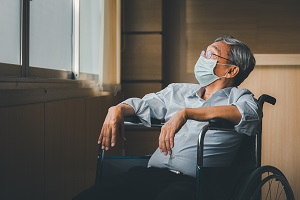 Older age, male sex, and impaired cognitive and physical function are independently associated with mortality in US nursing home residents with COVID-19, researchers report in JAMA Internal Medicine. “It is time that we recognize that age alone does not sufficiently explain how older persons respond to COVID-19,” write the authors of an invited commentary. “Moreover, we should acknowledge the importance of going beyond traditionally assessed mortality risk factors and promote the evaluation of cognitive and physical functioning. Above all, in a time of so much divisiveness and insecurity, we must not make a bad situation worse by succumbing to ageism when measuring prognosis in nursing home residents with COVID-19.”
Older age, male sex, and impaired cognitive and physical function are independently associated with mortality in US nursing home residents with COVID-19, researchers report in JAMA Internal Medicine. “It is time that we recognize that age alone does not sufficiently explain how older persons respond to COVID-19,” write the authors of an invited commentary. “Moreover, we should acknowledge the importance of going beyond traditionally assessed mortality risk factors and promote the evaluation of cognitive and physical functioning. Above all, in a time of so much divisiveness and insecurity, we must not make a bad situation worse by succumbing to ageism when measuring prognosis in nursing home residents with COVID-19.”
India, which has the second highest number of COVID-19 cases (behind the US) and the third highest number of related deaths (behind the US and Brazil), has given emergency approval to two vaccines—one from AstraZeneca/University of Oxford and one from local company Bharat Biotech, CNBC reports. An immunization program will start up within weeks.
Though it has been argued that countries led by women have fared better during the COVID-19 pandemic than those led by men, that doesn’t appear to be the case when looking at fatality rates, according to a study in PLOS ONE. “Country cultural values offer more substantive explanation for COVID-19 outcomes,” the researchers say.
 The median density of web-like neutrophil extracellular traps (NETs) in STEMI patients with COVID-19 was tripled compared with noninfected controls, according to a study in JAMA Cardiology. These NETs could potentially become a new target for disrupting coronary clot formation caused by the virus, the researchers suggest. “This study reinforces the relevant role of NETs in the pathogenesis of SARS-CoV-2 infection. Based on our results, NETs seem to play a major role in coronary thrombosis in COVID-19 disease,” the lead author told TCTMD’s L.A. McKeown.
The median density of web-like neutrophil extracellular traps (NETs) in STEMI patients with COVID-19 was tripled compared with noninfected controls, according to a study in JAMA Cardiology. These NETs could potentially become a new target for disrupting coronary clot formation caused by the virus, the researchers suggest. “This study reinforces the relevant role of NETs in the pathogenesis of SARS-CoV-2 infection. Based on our results, NETs seem to play a major role in coronary thrombosis in COVID-19 disease,” the lead author told TCTMD’s L.A. McKeown.
January 4, 2021
 On New Year’s Day, the United States passed 20 million confirmed COVID-19 cases, NPR reports. That means it took less than 2 months to double the number of cases from 10 million on November 9. According to the Johns Hopkins COVID-19 Dashboard, the US has twice as many cases as the country next in the list (about 10 million cases in India). Roughly 1.85 million people have died globally.
On New Year’s Day, the United States passed 20 million confirmed COVID-19 cases, NPR reports. That means it took less than 2 months to double the number of cases from 10 million on November 9. According to the Johns Hopkins COVID-19 Dashboard, the US has twice as many cases as the country next in the list (about 10 million cases in India). Roughly 1.85 million people have died globally.
On Monday, the Japanese government said it’s mulling a state of emergency declaration in and around Tokyo in response to surging COVID-19 numbers, “casting fresh doubt over whether it can push ahead with the summer Olympics and keep economic damage to a minimum,” according to Reuters. Preparations are being made for a state of emergency that would take effect on Friday and last about a month.
Phase III data on the efficacy and safety of Moderna’s vaccine were published last week in the New England Journal of Medicine, confirming 94.1% efficacy against symptomatic illness. All 30 cases of severe COVID-19, including one death, were observed in the placebo group. Serious adverse events were rare and occurred at similar frequency in the two trial arms.
 As of Sunday night, there have been more than 12.3 million COVID-19 vaccine doses—from a range of manufacturers—administered around the world, including 4.33 million in the United States, according to a tracker from Bloomberg. Reuters reports US officials are considering giving some people a half dose of Moderna’s vaccine to speed the rollout, which has dragged.
As of Sunday night, there have been more than 12.3 million COVID-19 vaccine doses—from a range of manufacturers—administered around the world, including 4.33 million in the United States, according to a tracker from Bloomberg. Reuters reports US officials are considering giving some people a half dose of Moderna’s vaccine to speed the rollout, which has dragged.
Still, Anthony Fauci, MD, director of the US National Institute of Allergy and Infectious Diseases (NIAID), said President-elect Joe Biden’s pledge to administer 100 million shots within his first 100 days in office (starting January 20) is achievable, the Associated Press reports.
The limited surveillance of the newly identified, more-transmissible SARS-CoV-2 variant is “déjà vu all over again,” writes STAT’s Helen Branswell: “A little less than a year ago, the early response to the coronavirus crisis was stifled by an inability to scale up testing to detect the virus and curb its spread. Now, once again, it’s unclear how prevalent the new strain, which first surfaced in the UK, might be in the US.”
And just how infectious is that new strain? Researchers from Imperial College London released some information on New Year’s Eve, with analyses showing that the variant “has a substantial transmission advantage, with the estimated difference in reproduction numbers between [it and other strains] ranging between 0.4 and 0.7, and the ratio of reproduction numbers varying between 1.4 and 1.8.” This presents challenges for ongoing control efforts and raises concerns about reopening schools this month, they say.
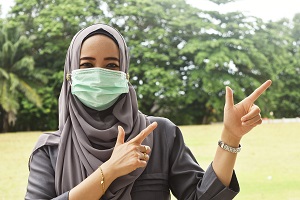 Indonesia is taking a different approach to COVID-19 vaccination compared with other countries, focusing first on adults of working age rather than senior citizens as a strategy to quickly build up herd immunity and revive the economy, Reuters reports. The story includes expert takes on the potential pros and cons of the approach.
Indonesia is taking a different approach to COVID-19 vaccination compared with other countries, focusing first on adults of working age rather than senior citizens as a strategy to quickly build up herd immunity and revive the economy, Reuters reports. The story includes expert takes on the potential pros and cons of the approach.
After the United Kingdom decided to delay the second dose of the COVID-19 vaccine from Pfizer/BioNTech to stretch supplies, Germany and Denmark are considering a similar move, Reuters reports. The UK has also said it will allow people to get COVID-19 shots from different manufacturers under certain “rare” circumstances. “In a departure from other strategies globally, the government said people could be given a mix-and-match of two COVID-19 shots, for example if the same vaccine dose was out of stock, according to guidelines published on New Year’s Eve.” There’s no evidence supporting this approach, but studies are ongoing. A STAT story explores potential risks associated with the strategy.
A shorter quarantine among household contacts of patients with confirmed SARS-CoV-2 infection “might be easier to adhere to but poses some risk for onward transmission,” researchers conclude in Morbidity and Mortality Weekly Report based on data from Tennessee and Wisconsin. “Persons released from quarantine before 14 days should continue to avoid close contact and wear masks when around others until 14 days after their last exposure.”
 Researchers from Jack D. Weiler Hospital in Bronx, NY, describe how they converted a cath lab into a COVID-19 ICU, providing a blueprint for other centers to follow, in the Journal of Invasive Cardiology. The biggest challenge, the senior author told TCTMD’s Yael Maxwell, “was not building or taking down walls. It was facing the unknown and getting comfortable with uncertainty.”
Researchers from Jack D. Weiler Hospital in Bronx, NY, describe how they converted a cath lab into a COVID-19 ICU, providing a blueprint for other centers to follow, in the Journal of Invasive Cardiology. The biggest challenge, the senior author told TCTMD’s Yael Maxwell, “was not building or taking down walls. It was facing the unknown and getting comfortable with uncertainty.”
COVID-19: TCTMD's Daily Dispatch for December
COVID- 19: TCTMD'S Daily Dispatch for November
COVID-19: TCTMD'S Daily Dispatch for October
COVID-19: TCTMD'S Daily Dispatch for September
COVID-19: TCTMD's Daily Dispatch for August
COVID-19: TCTMD’s Daily Dispatch for July
COVID-19: TCTMD’s Daily Dispatch for June
COVID-19: TCTMD’s Daily Dispatch for May
COVID-19: TCTMD’s Daily Dispatch for April
COVID-19: TCTMD’s Daily Dispatch for March
Todd Neale is the Associate News Editor for TCTMD and a Senior Medical Journalist. He got his start in journalism at …
Read Full Bio

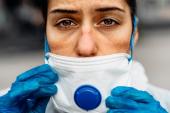

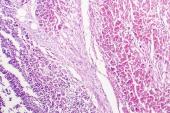
Comments